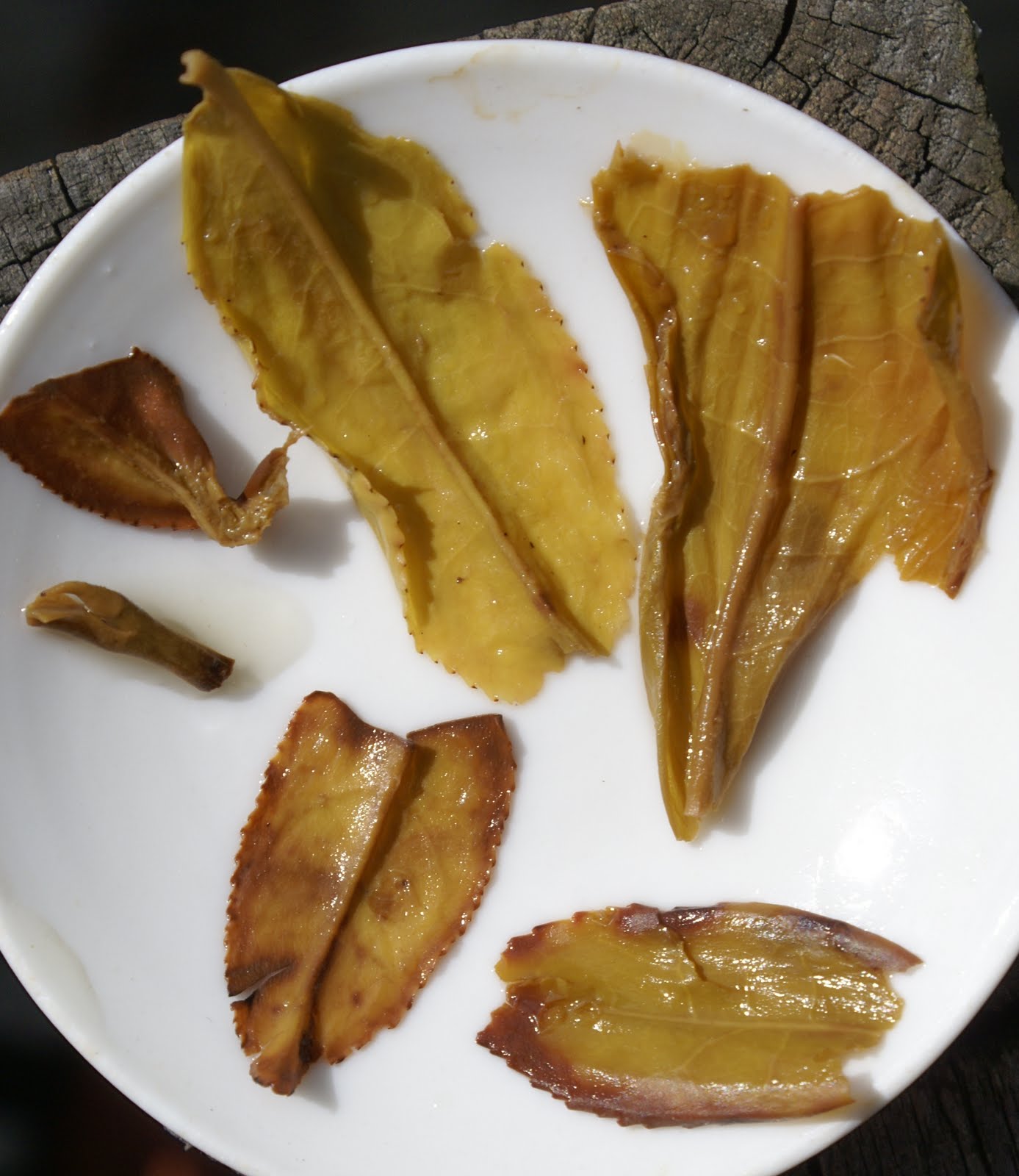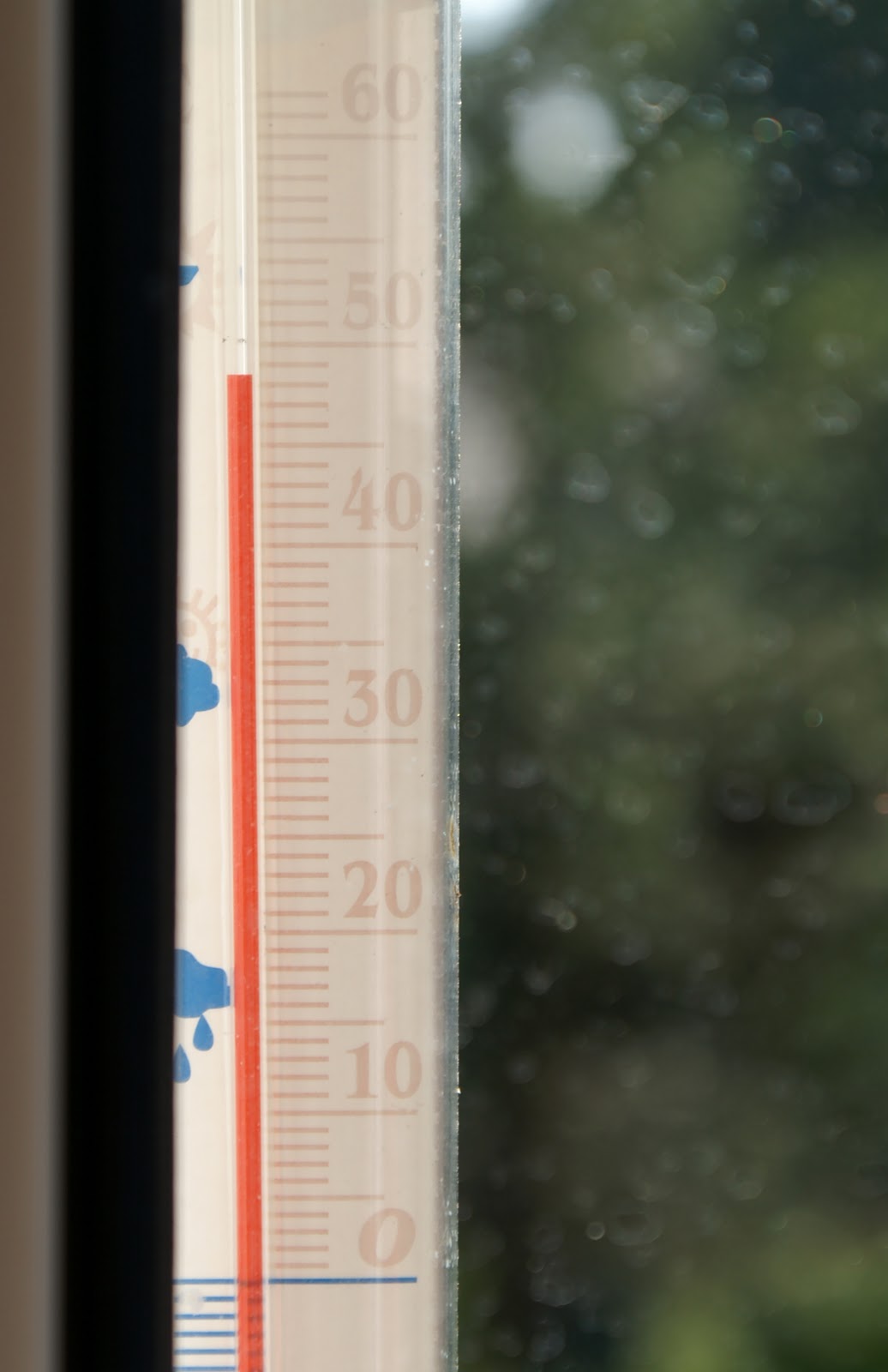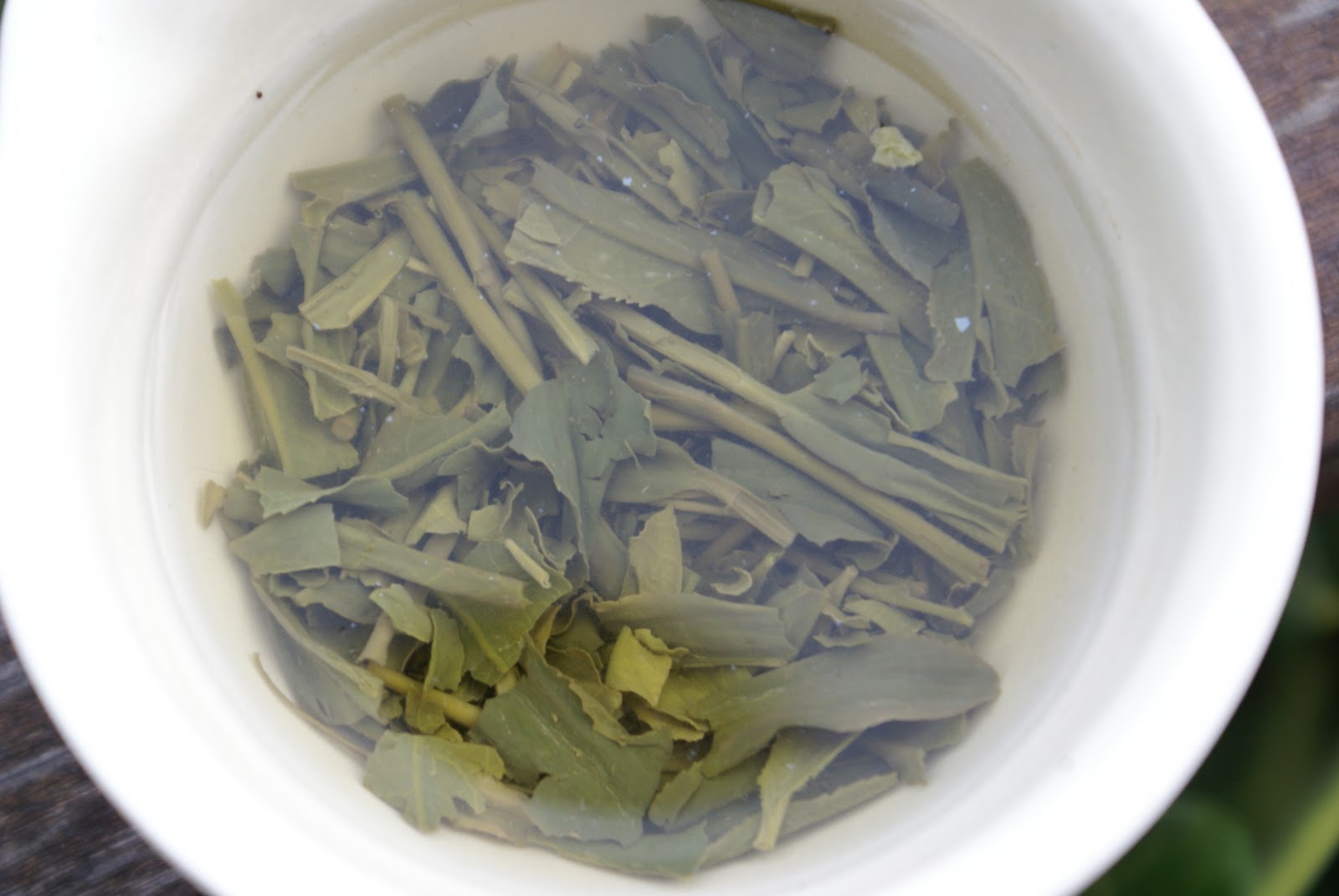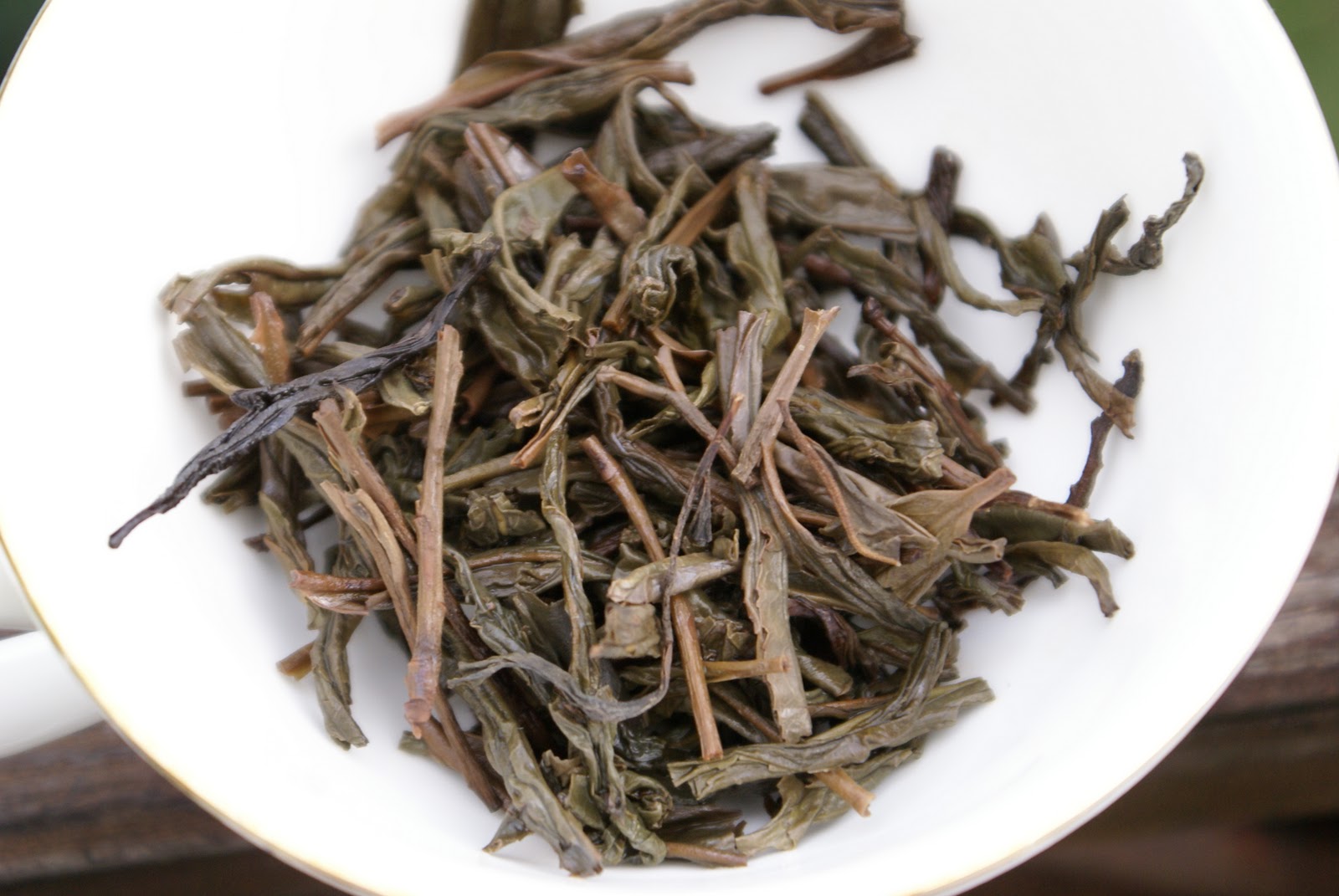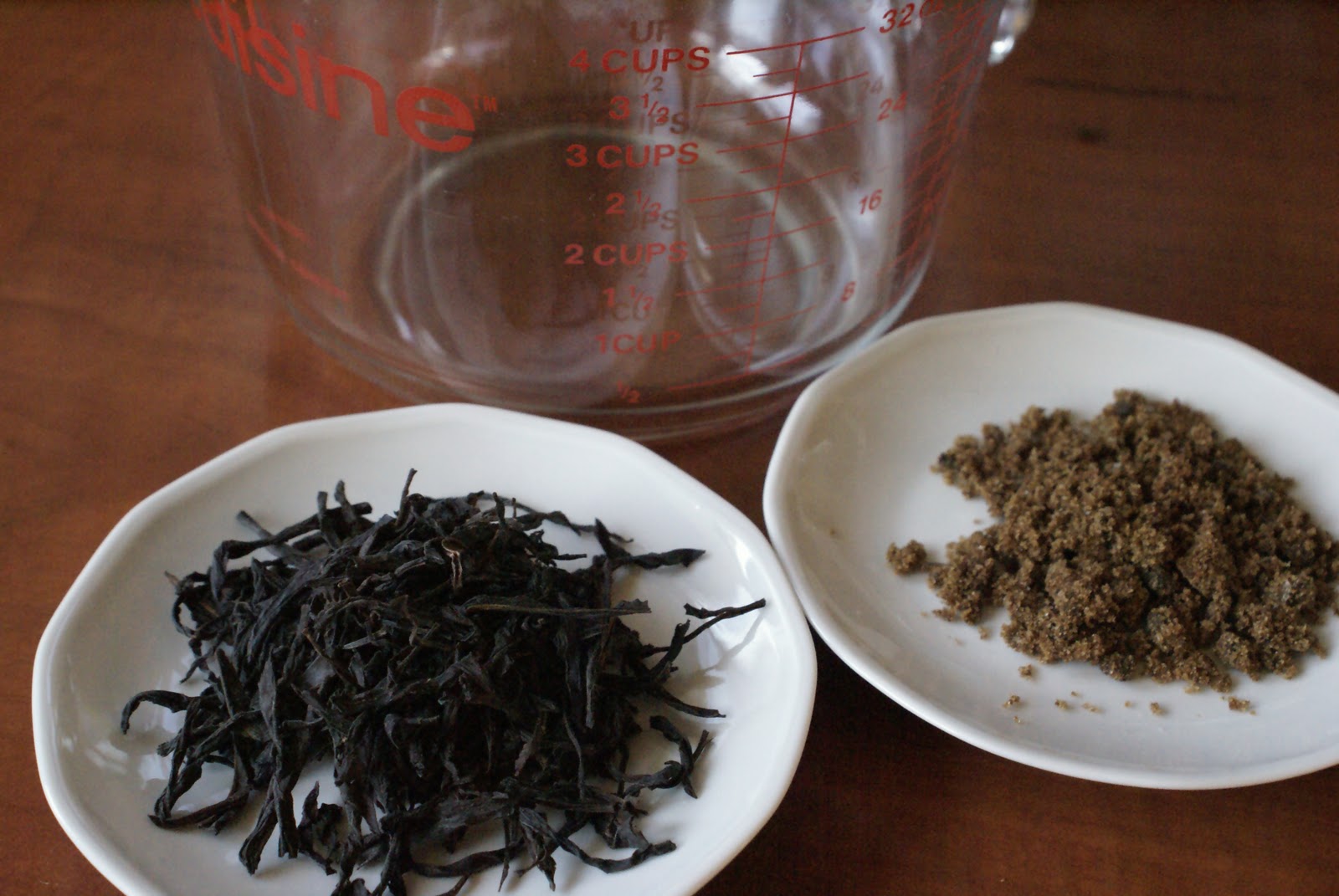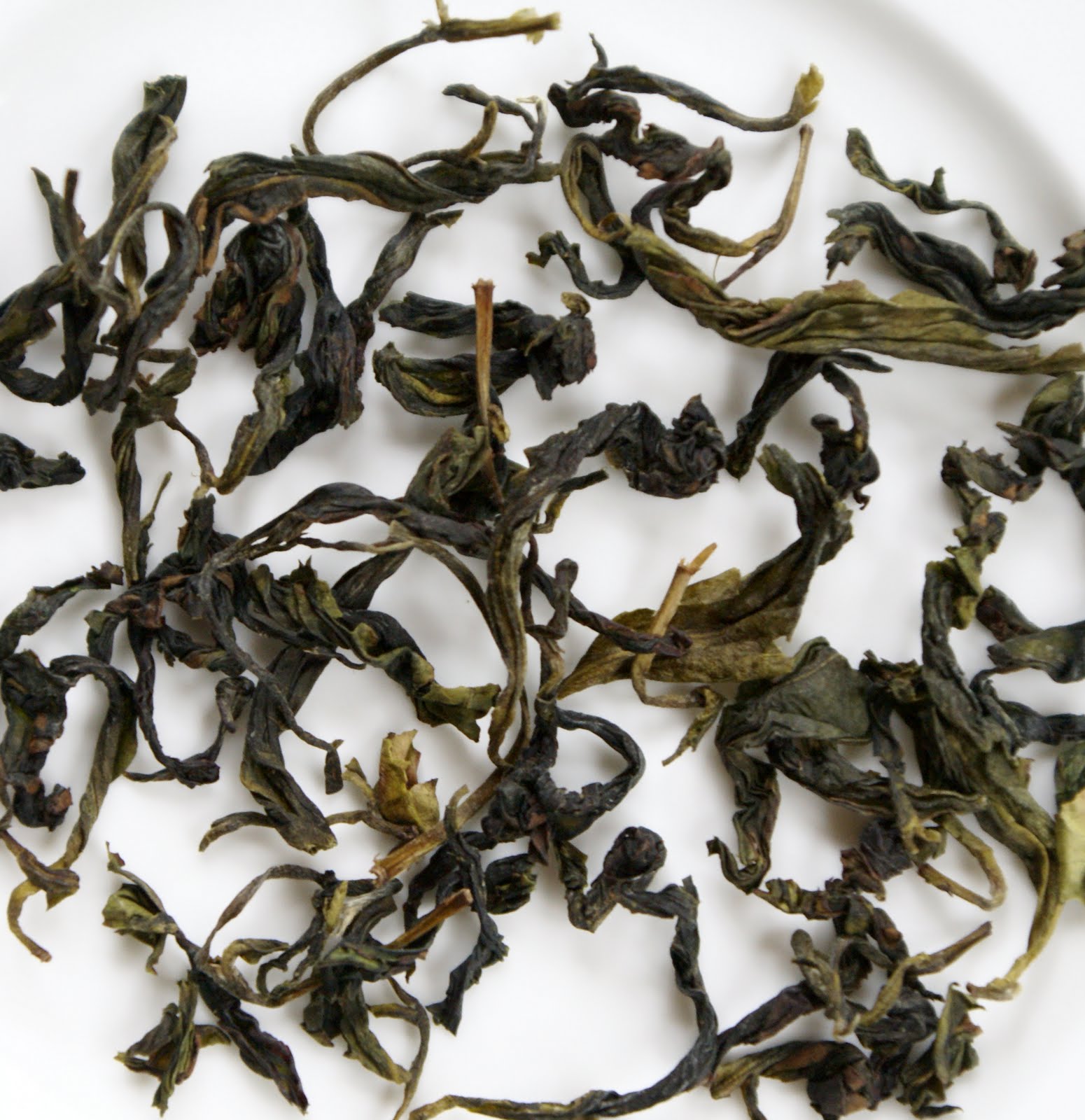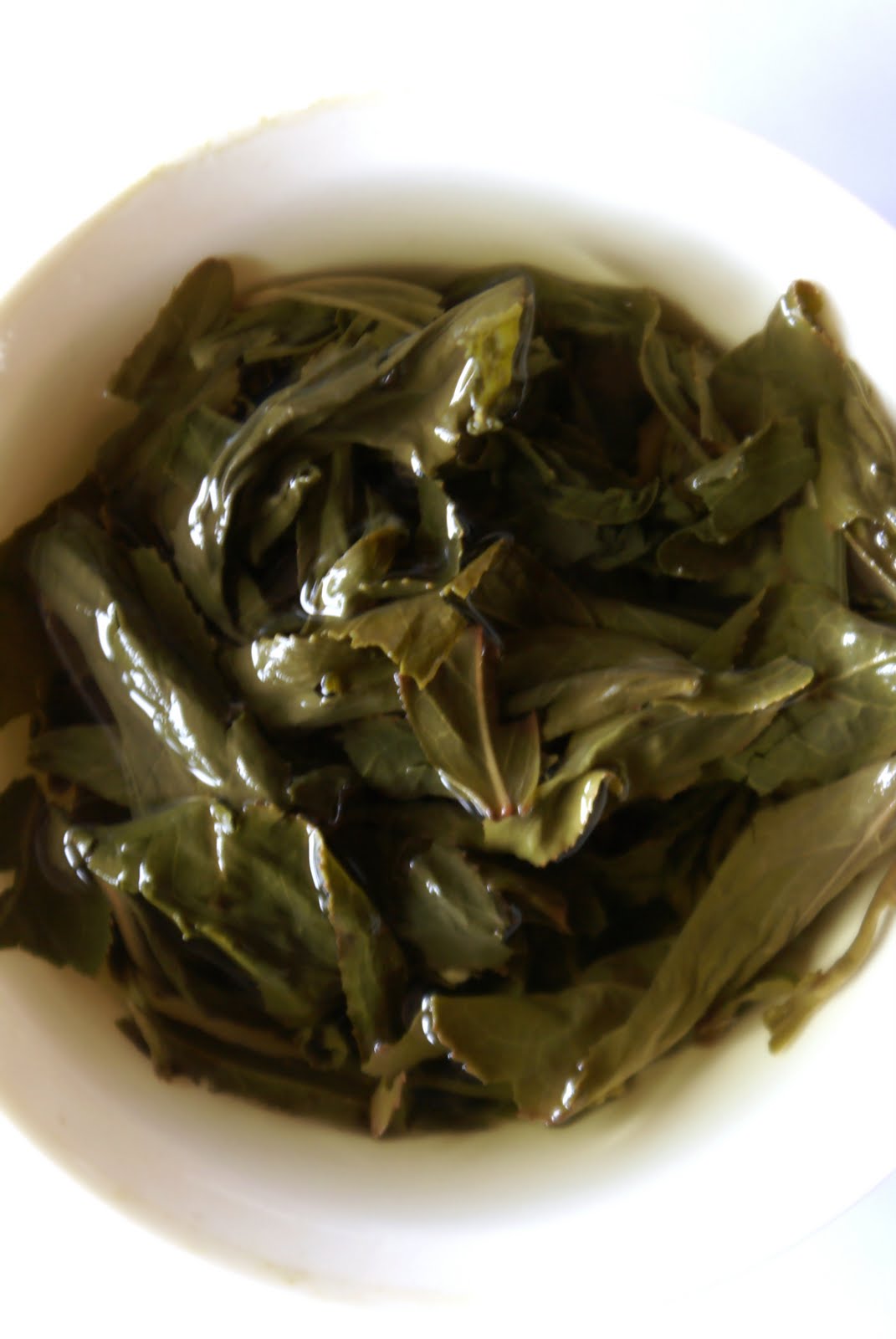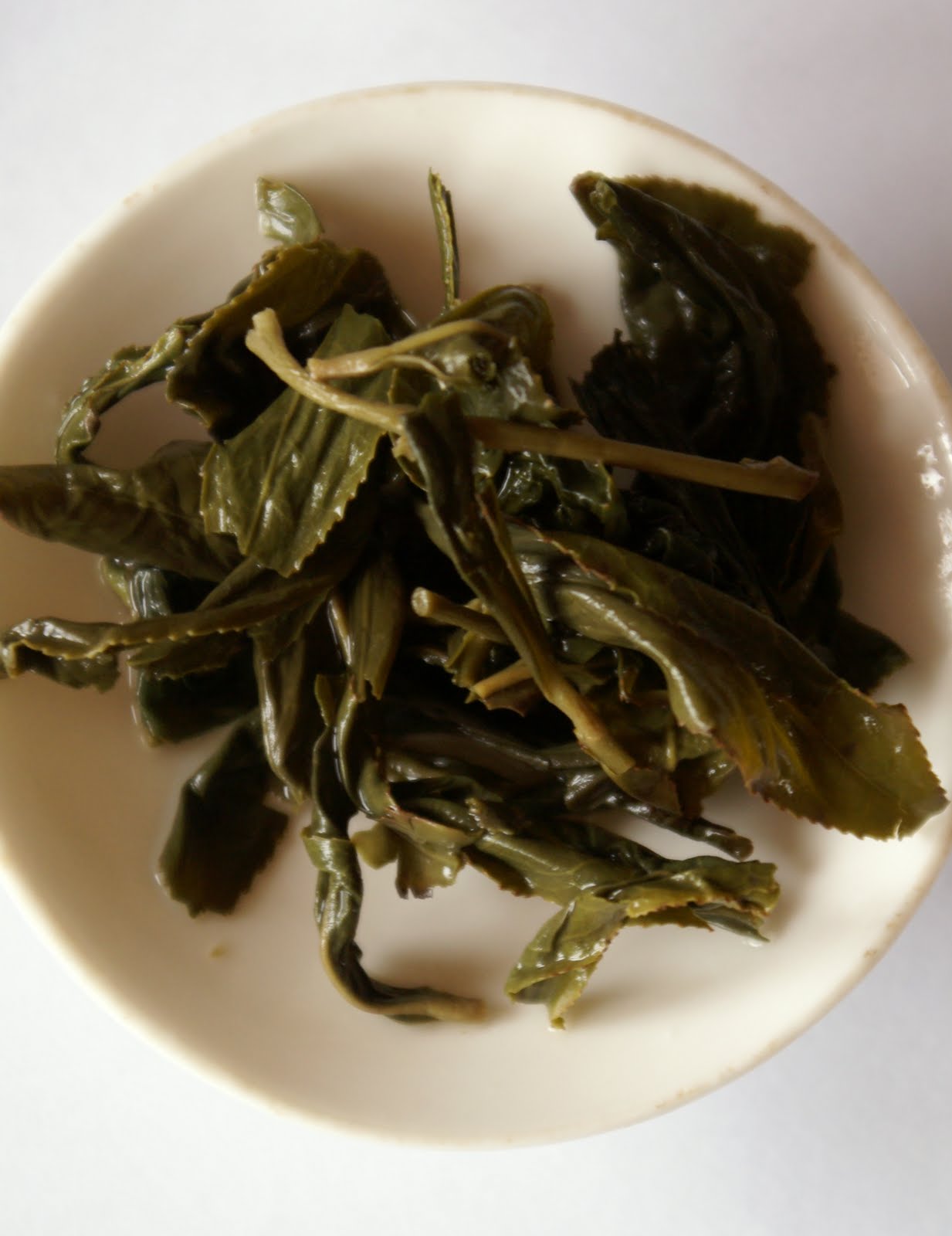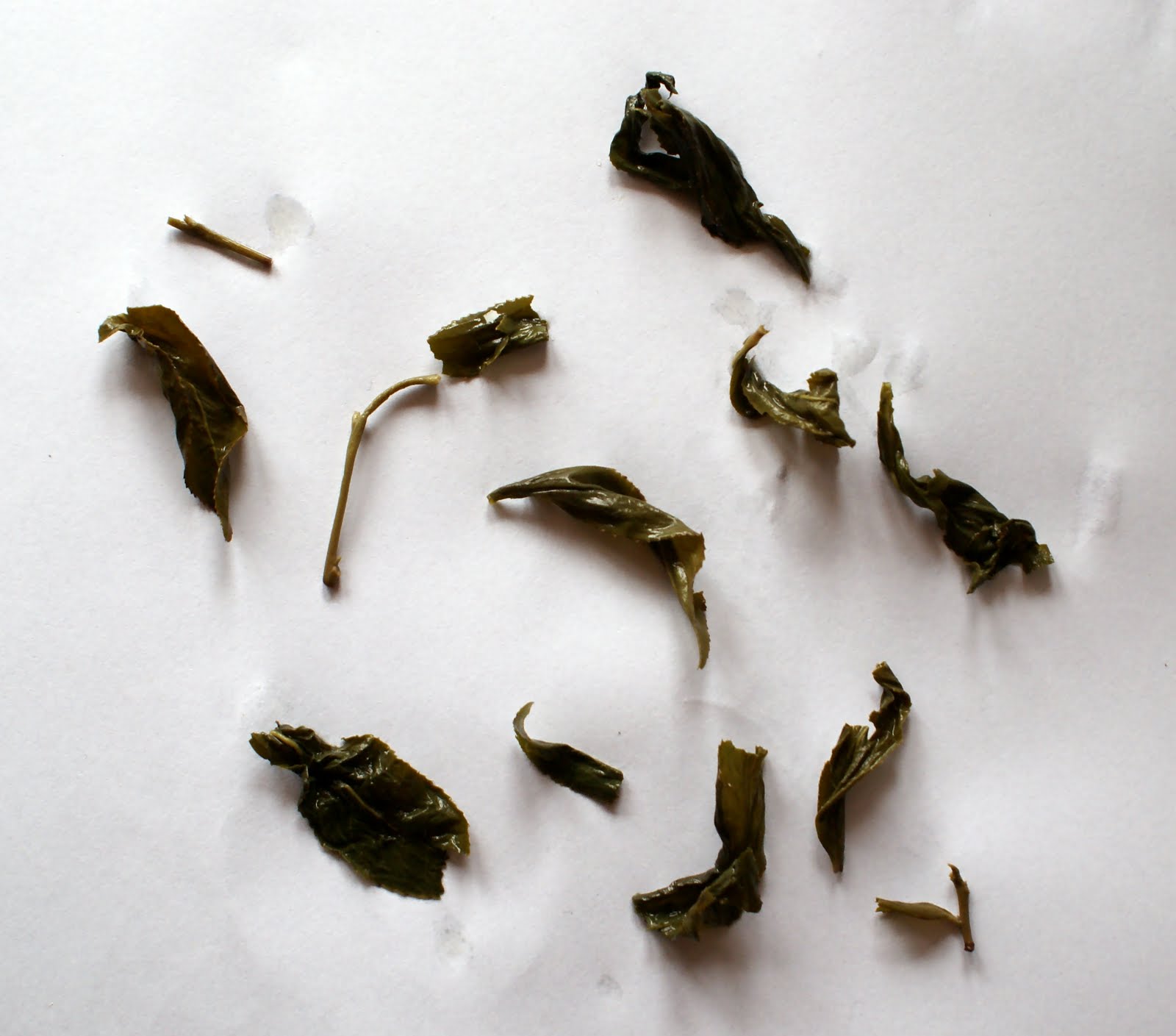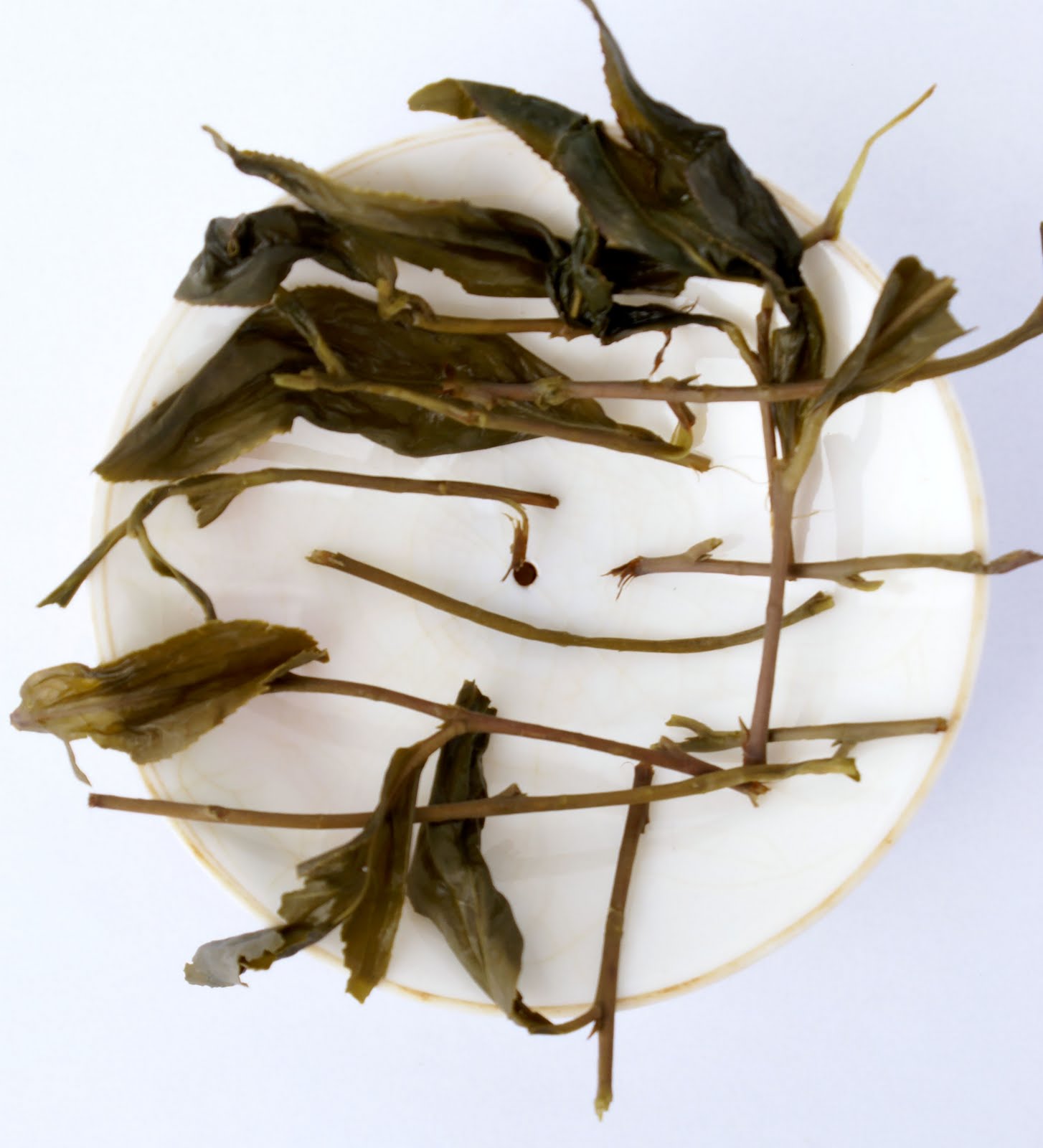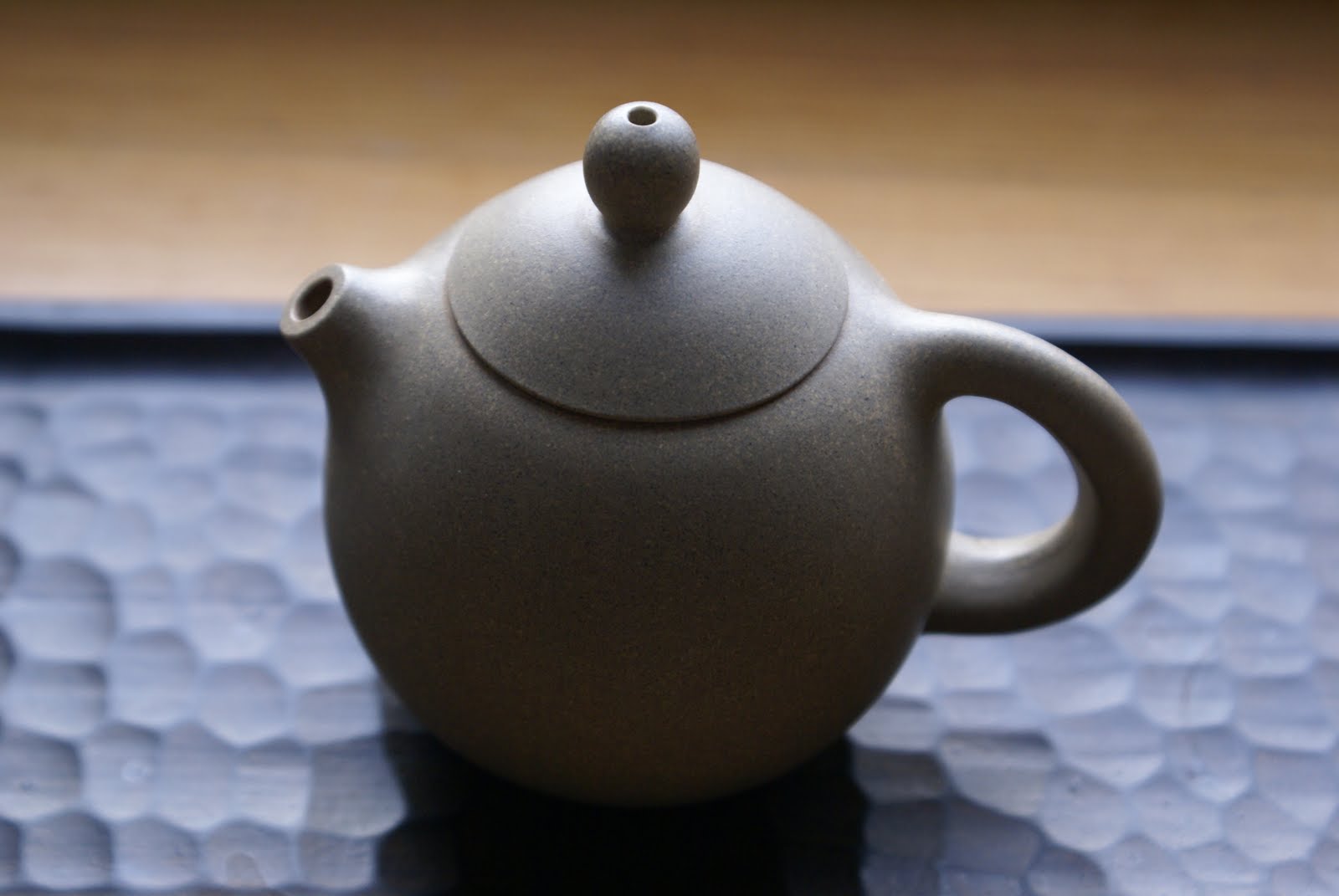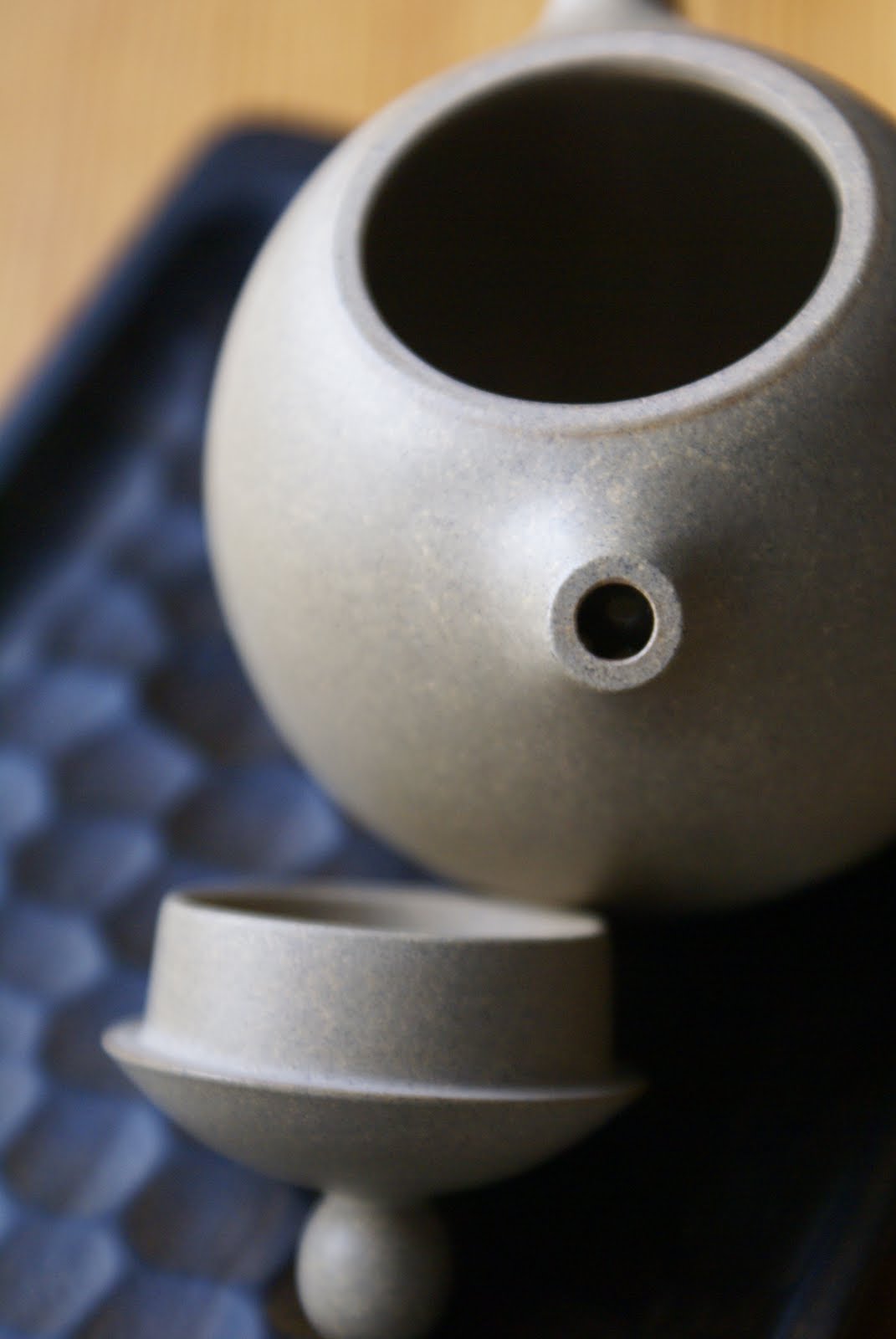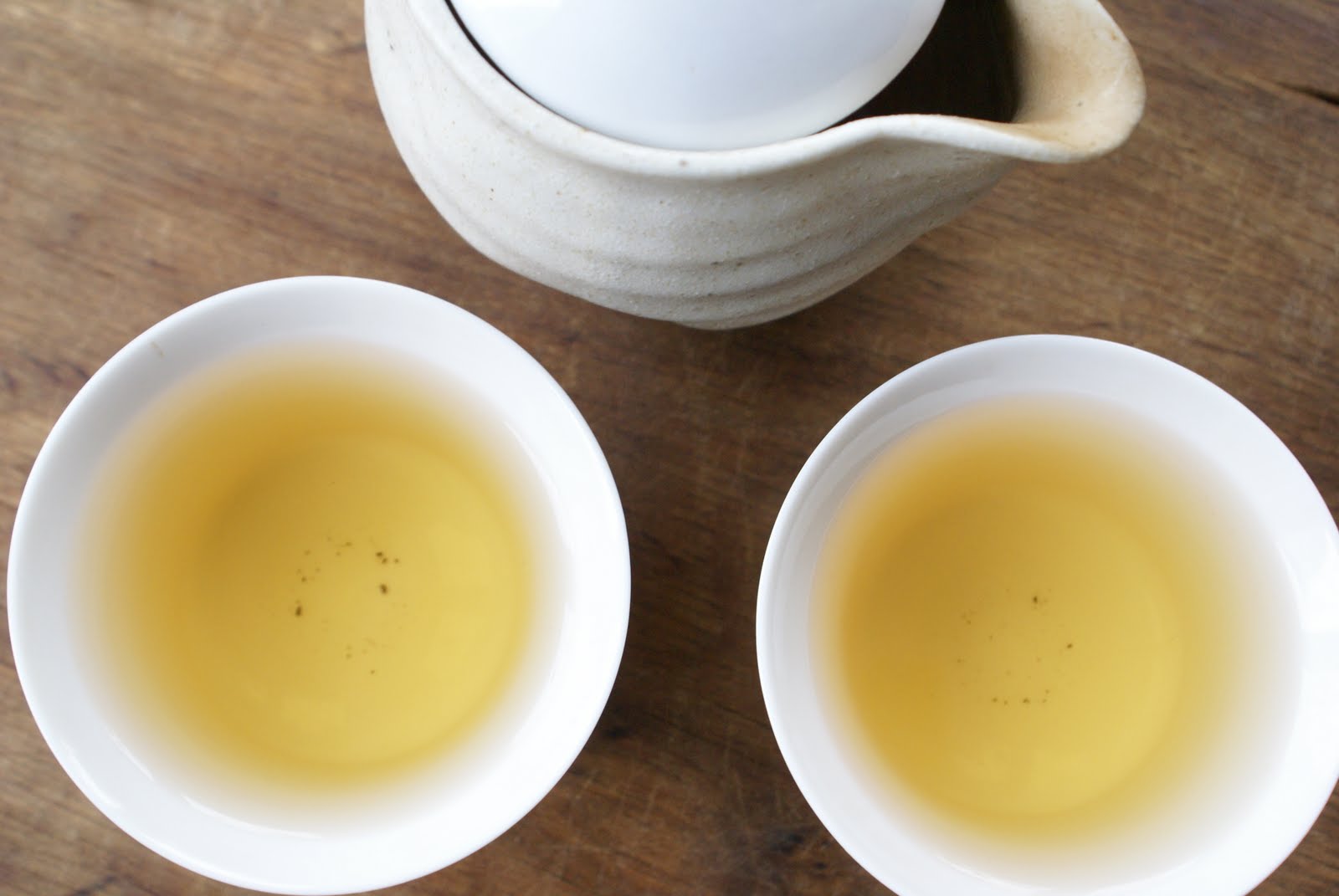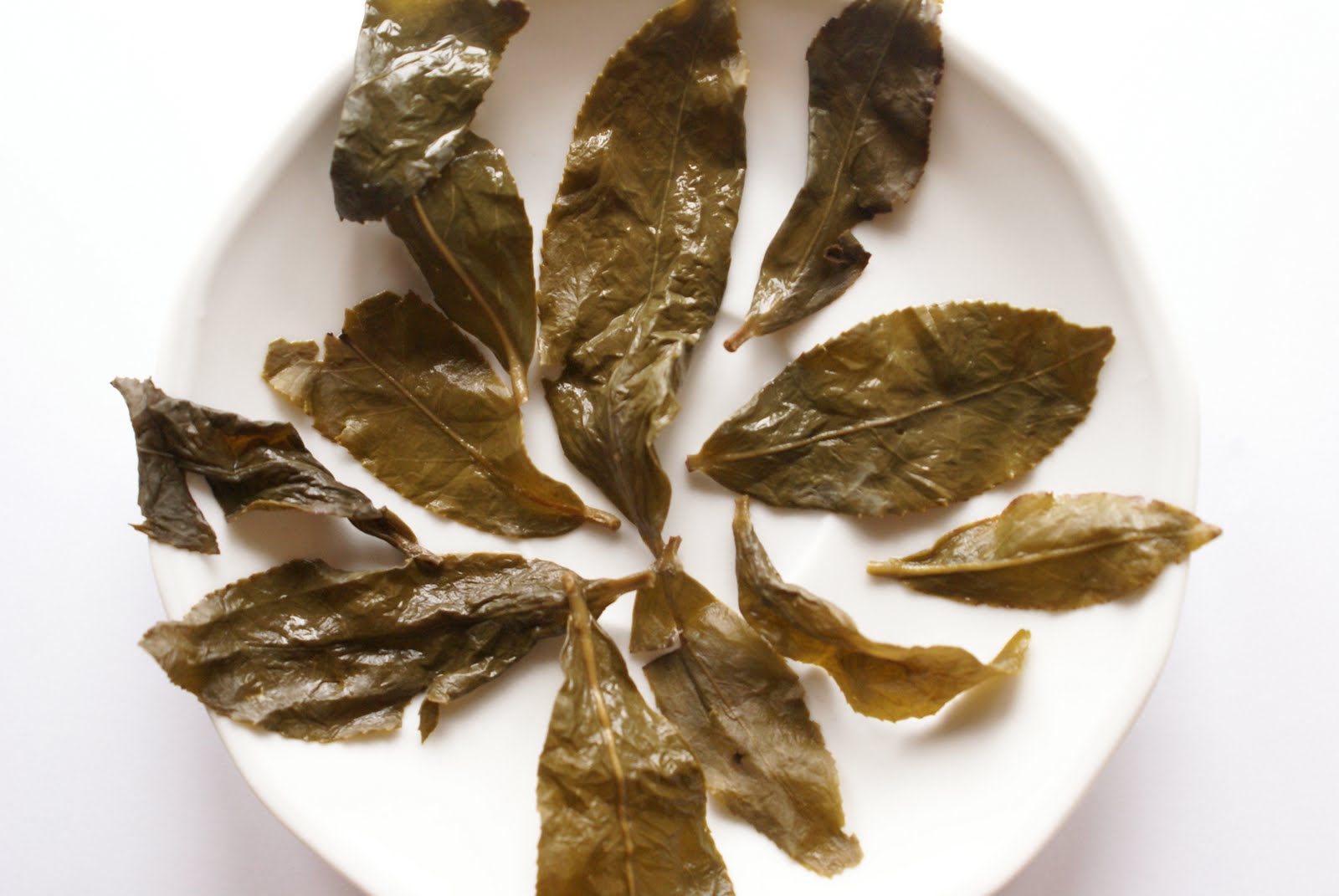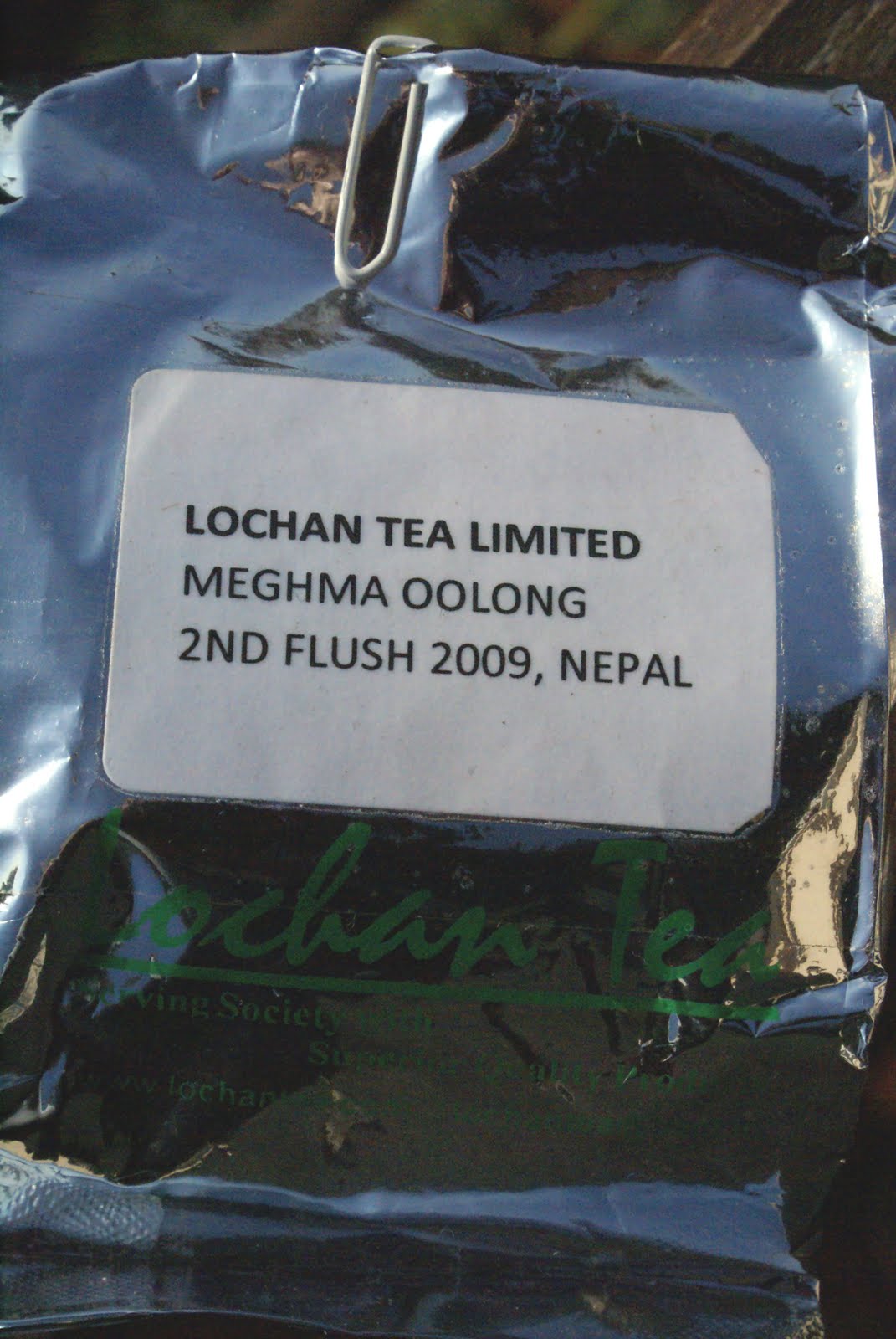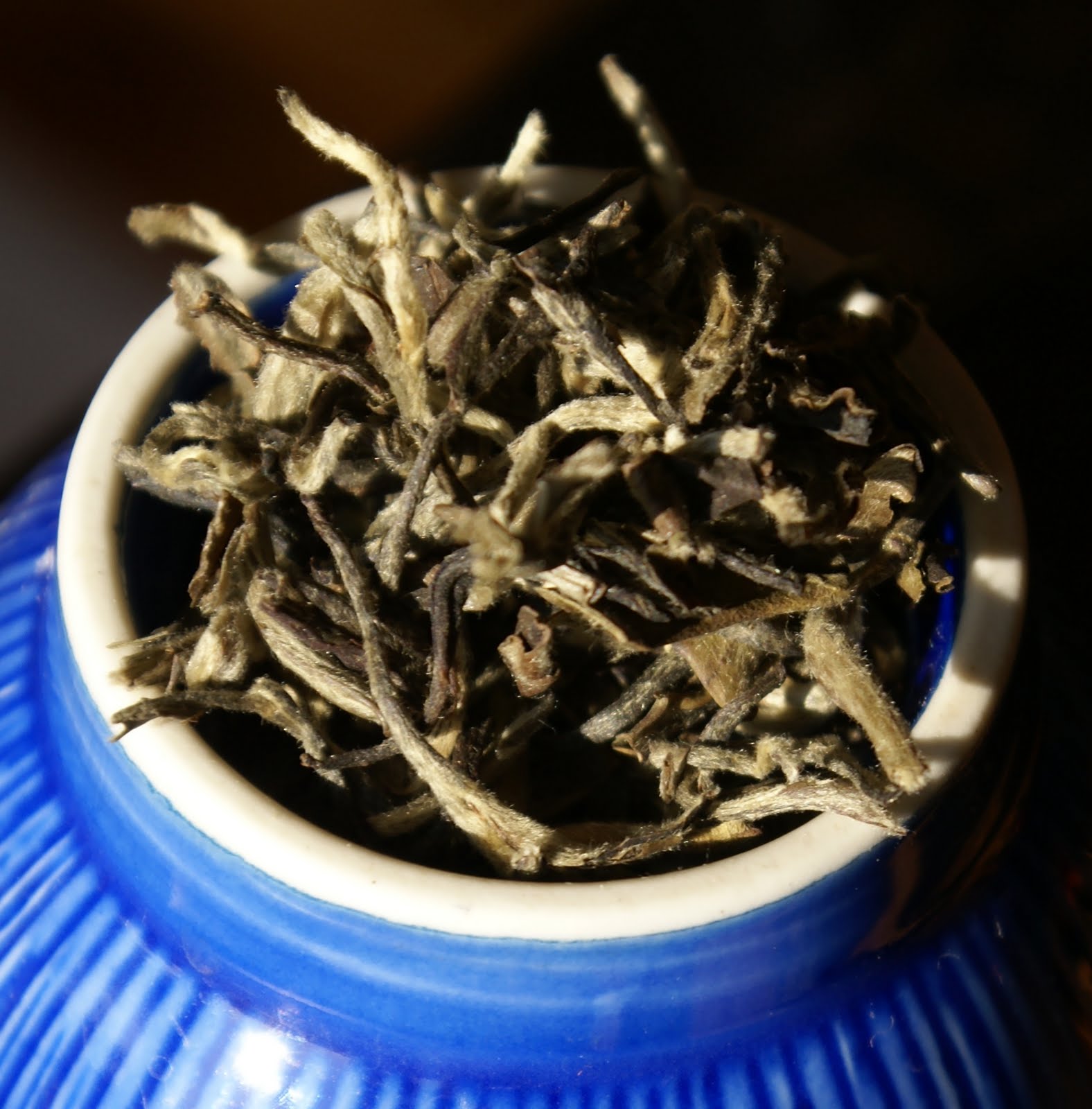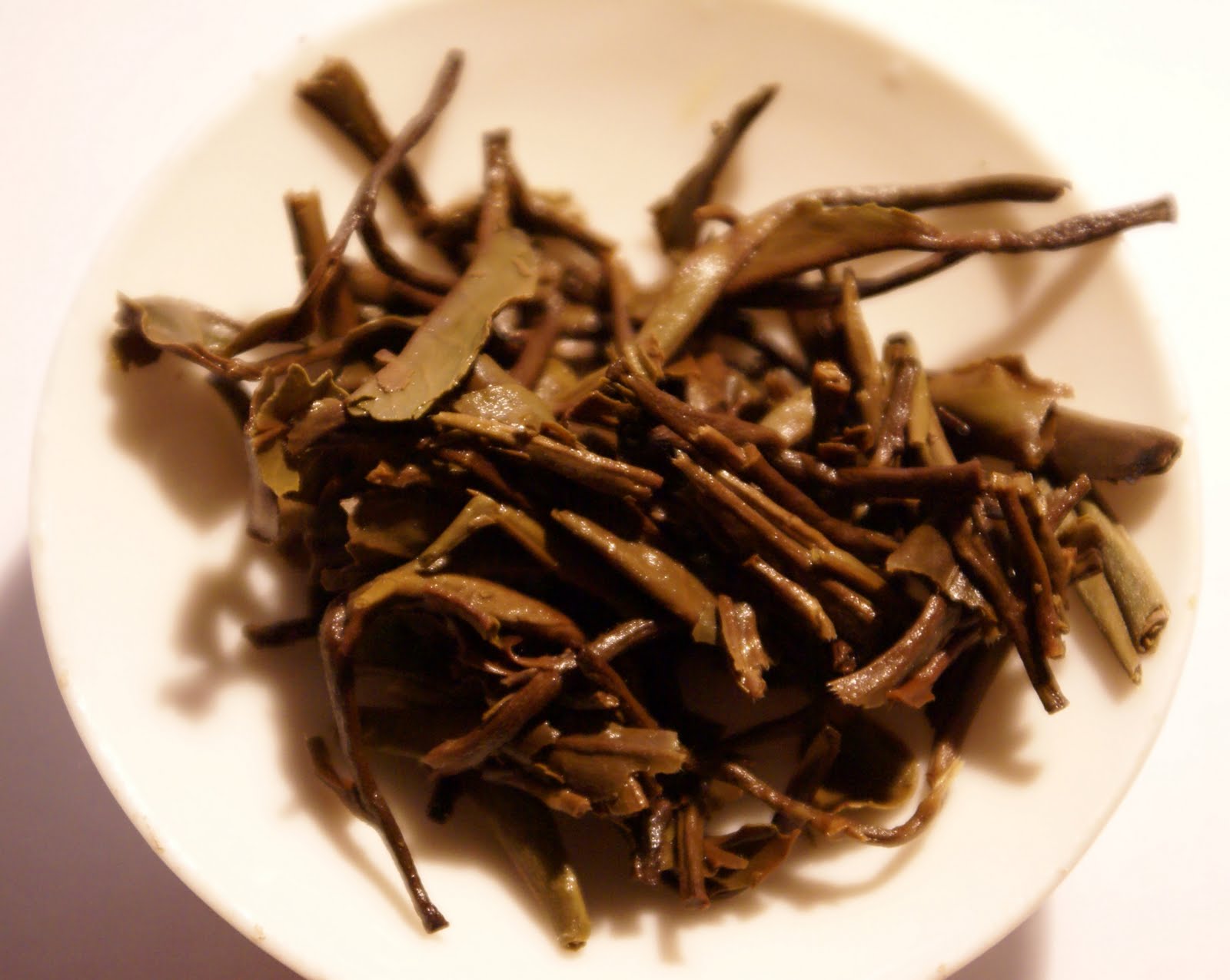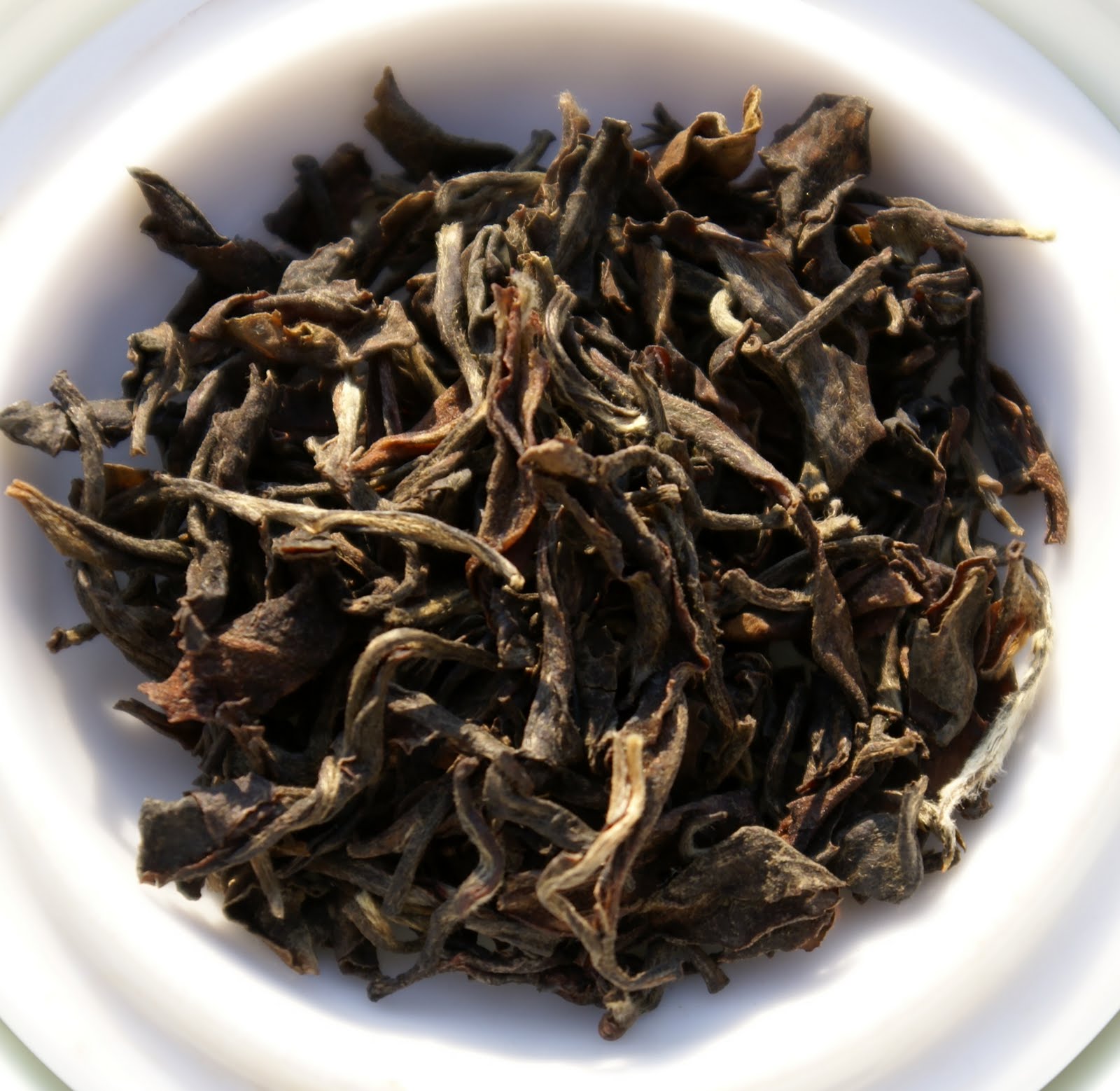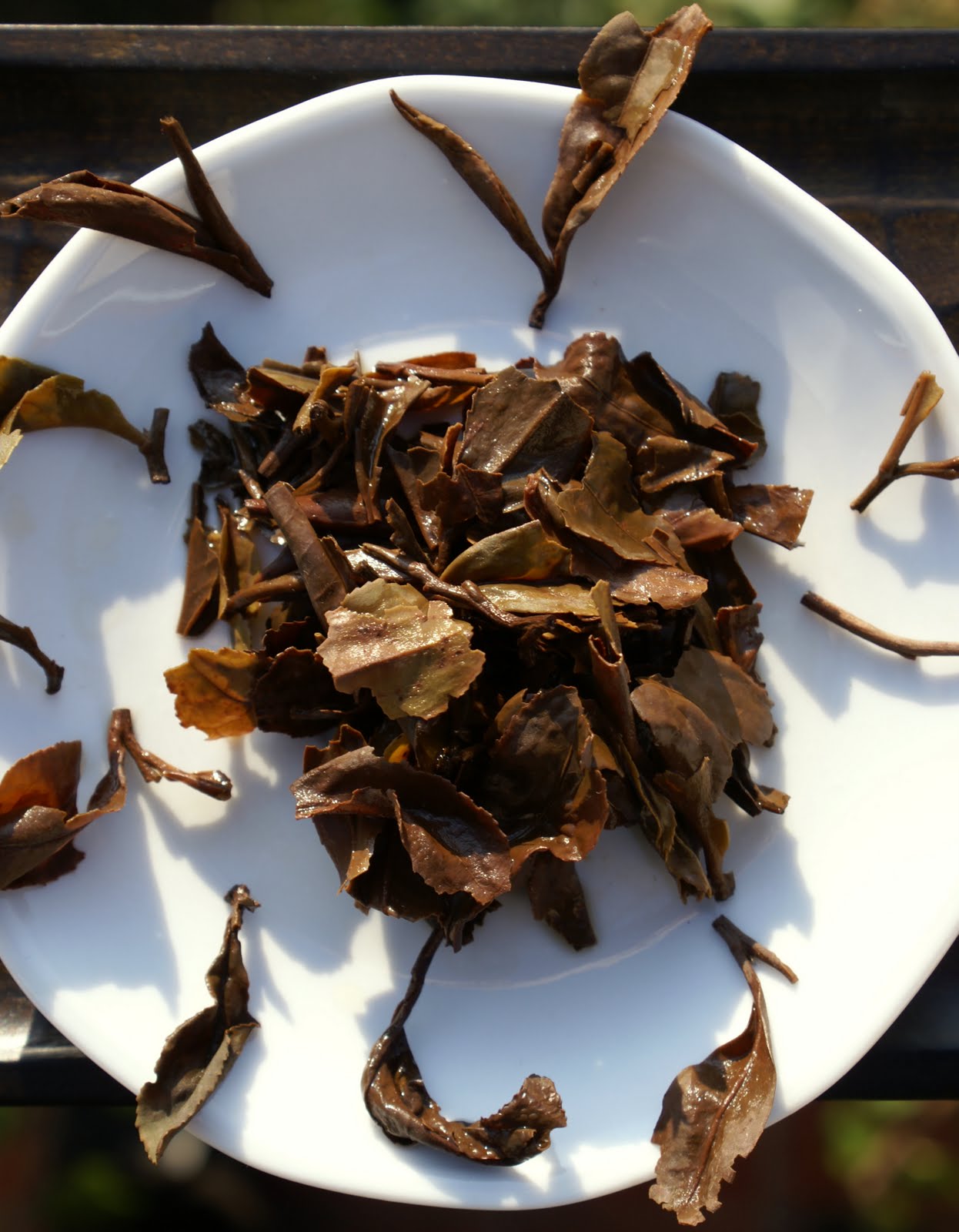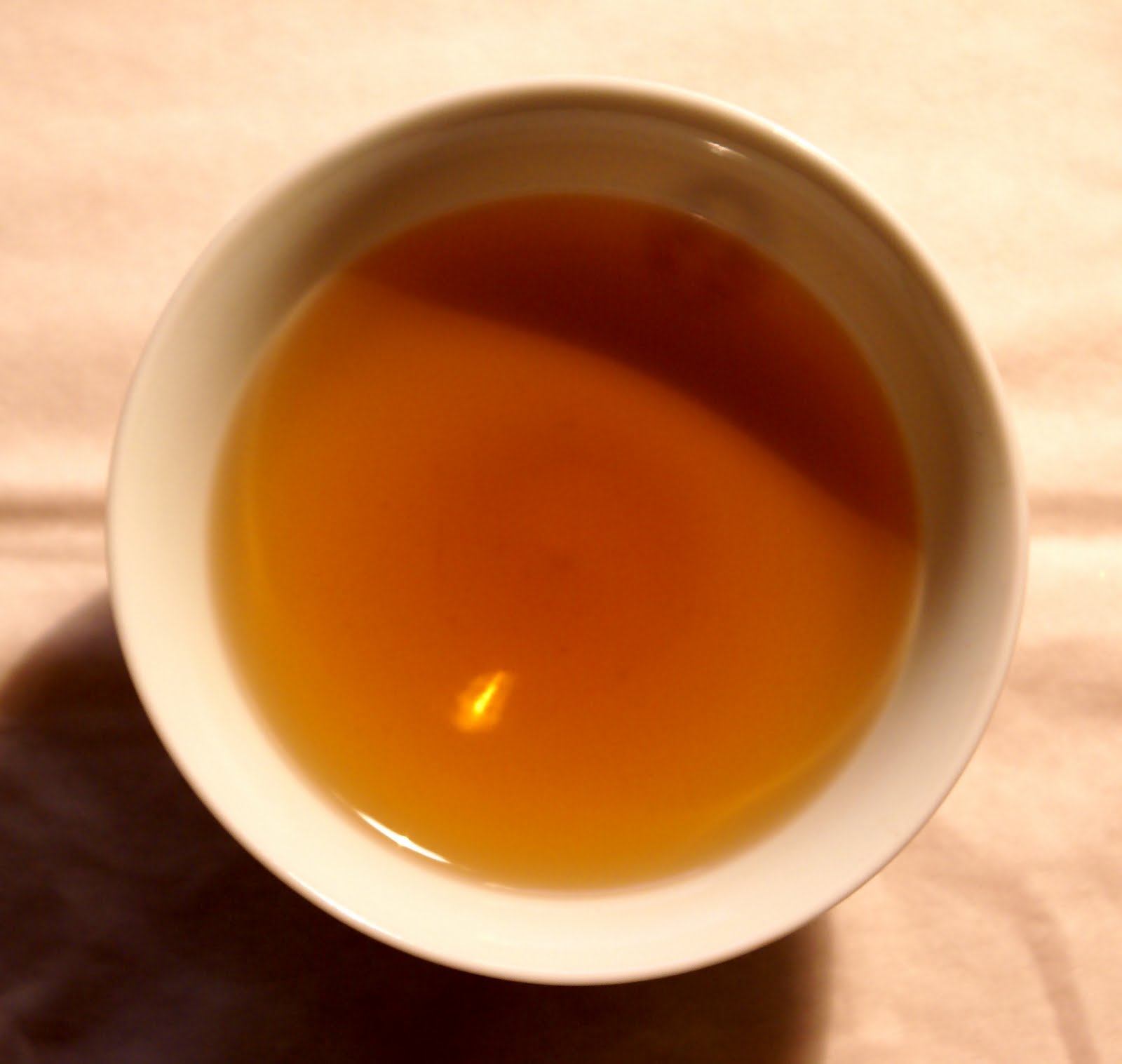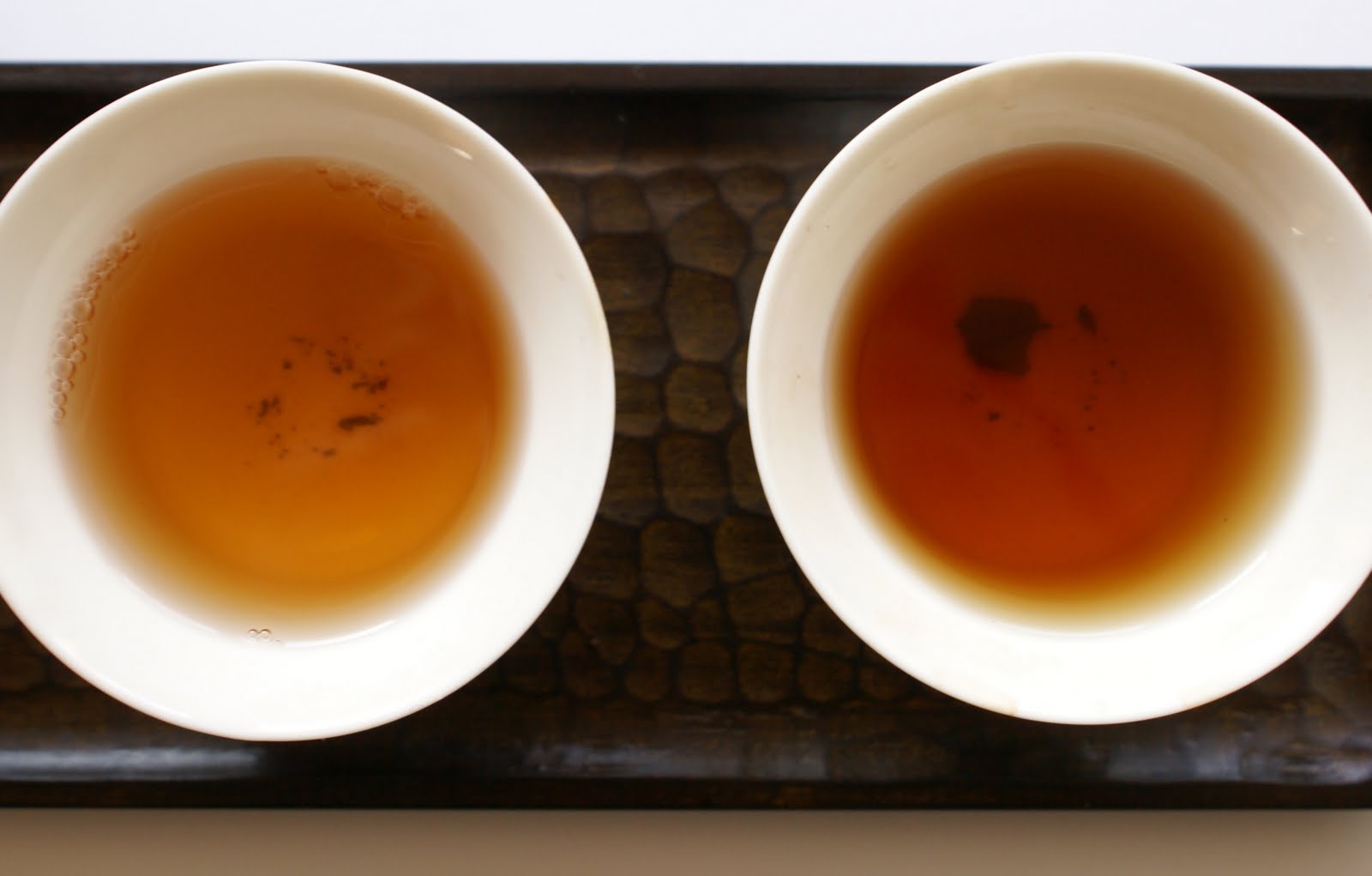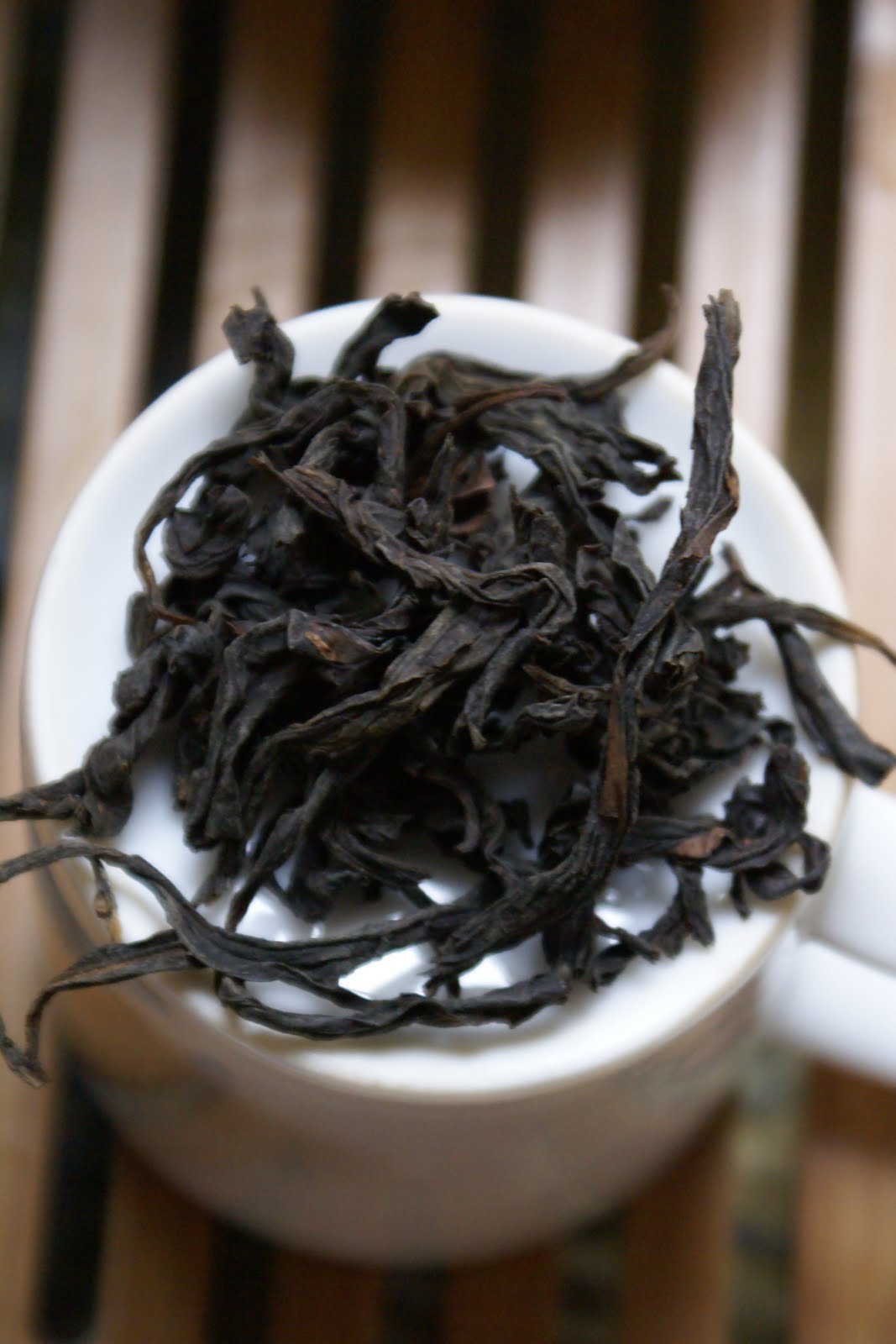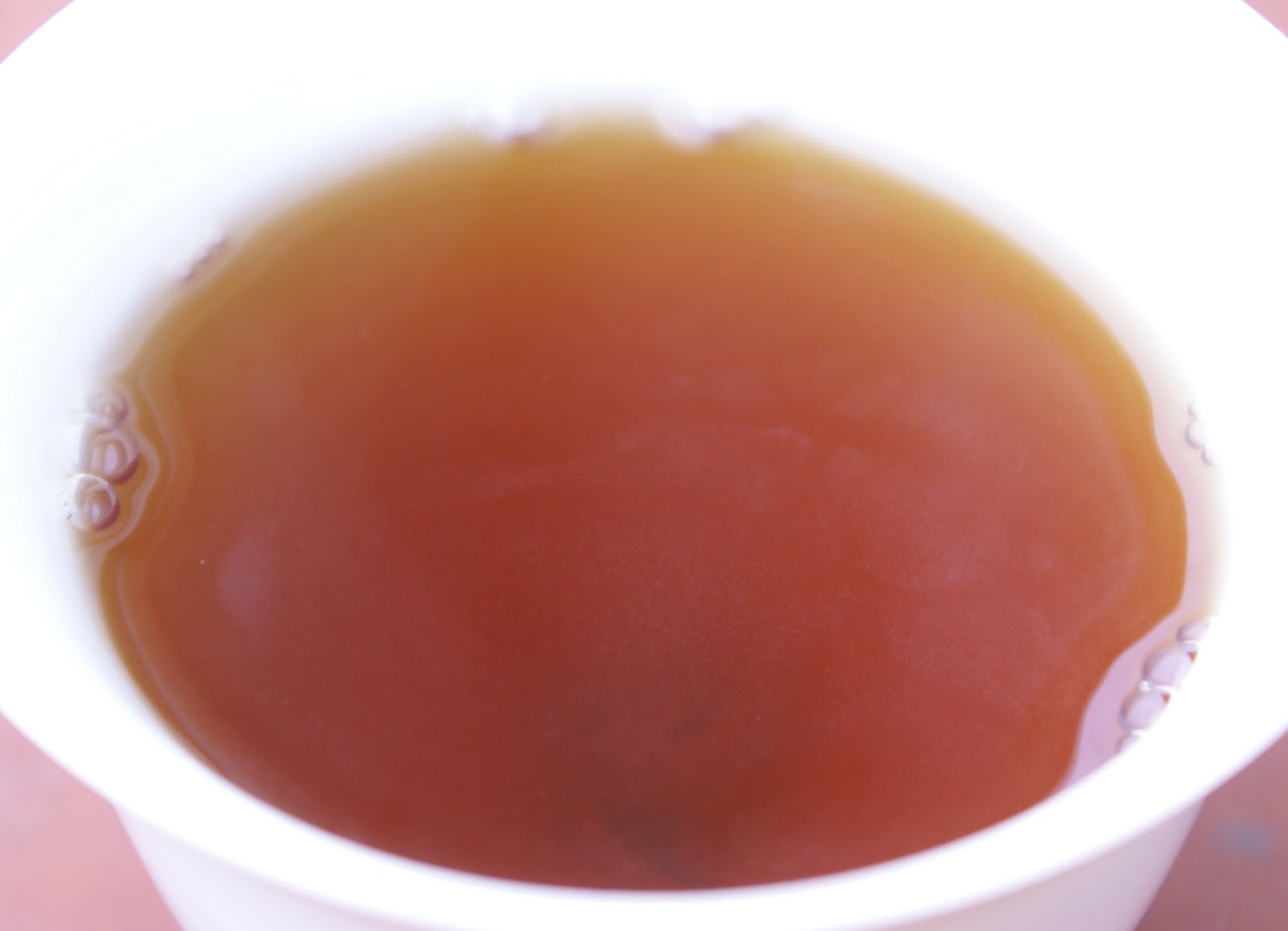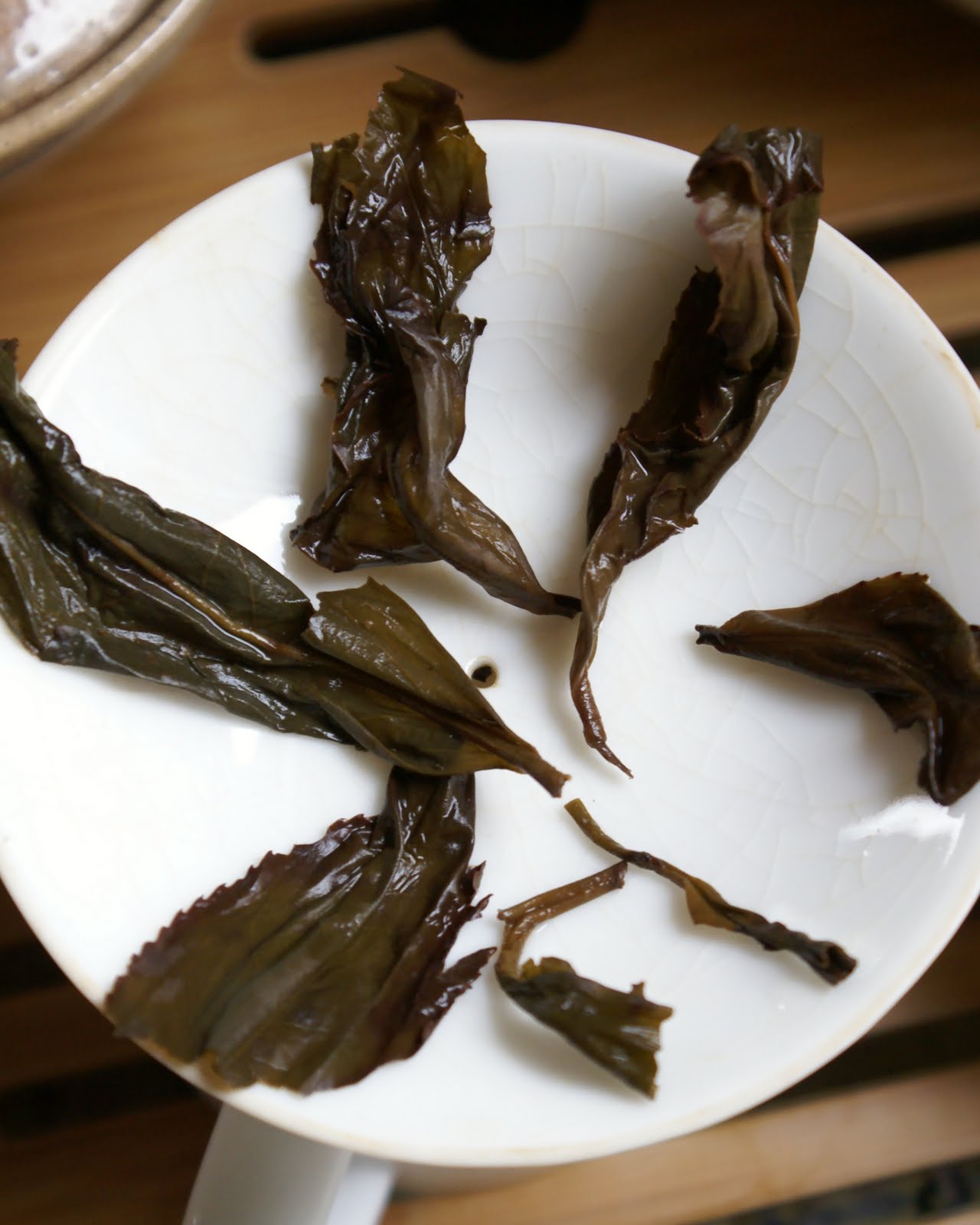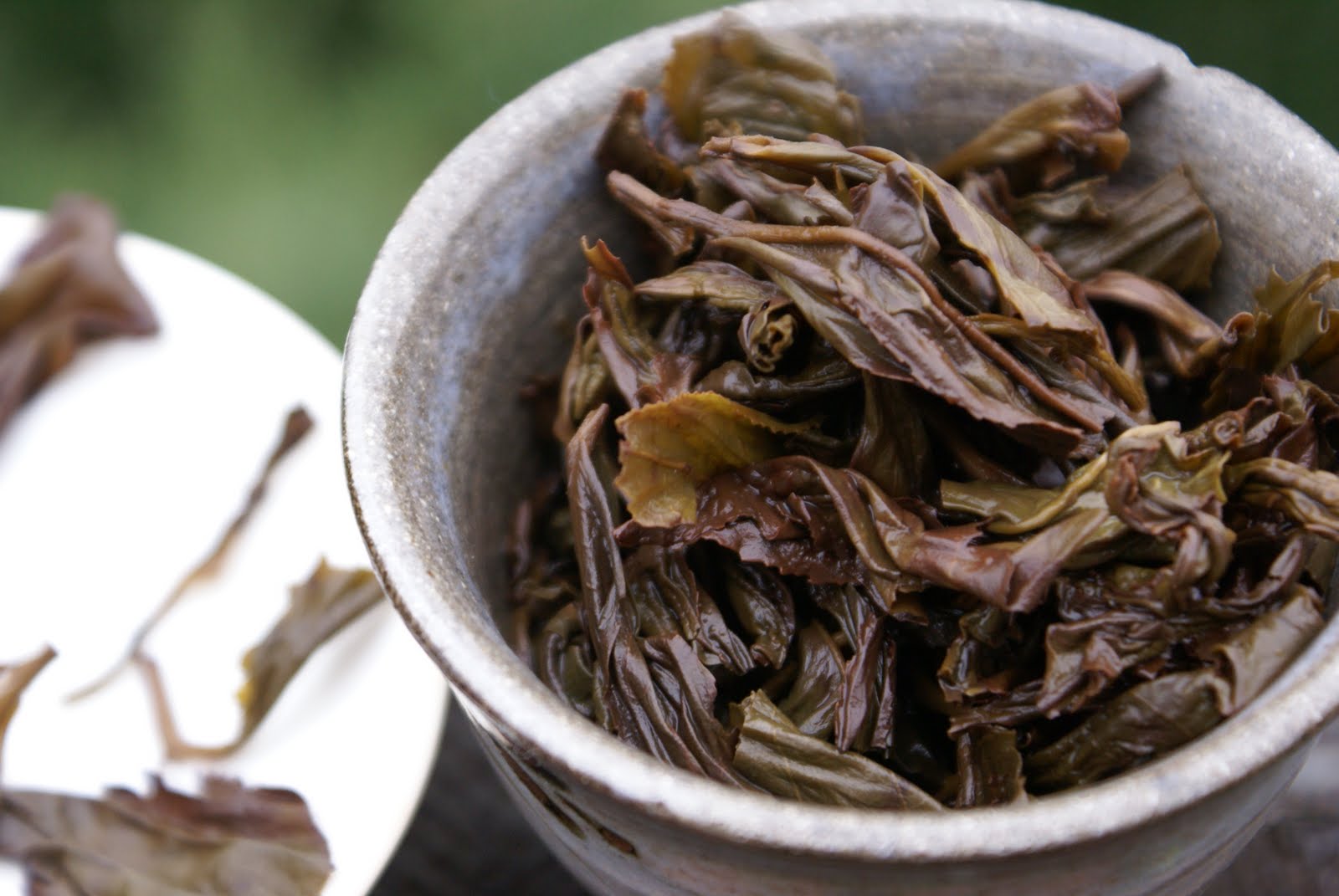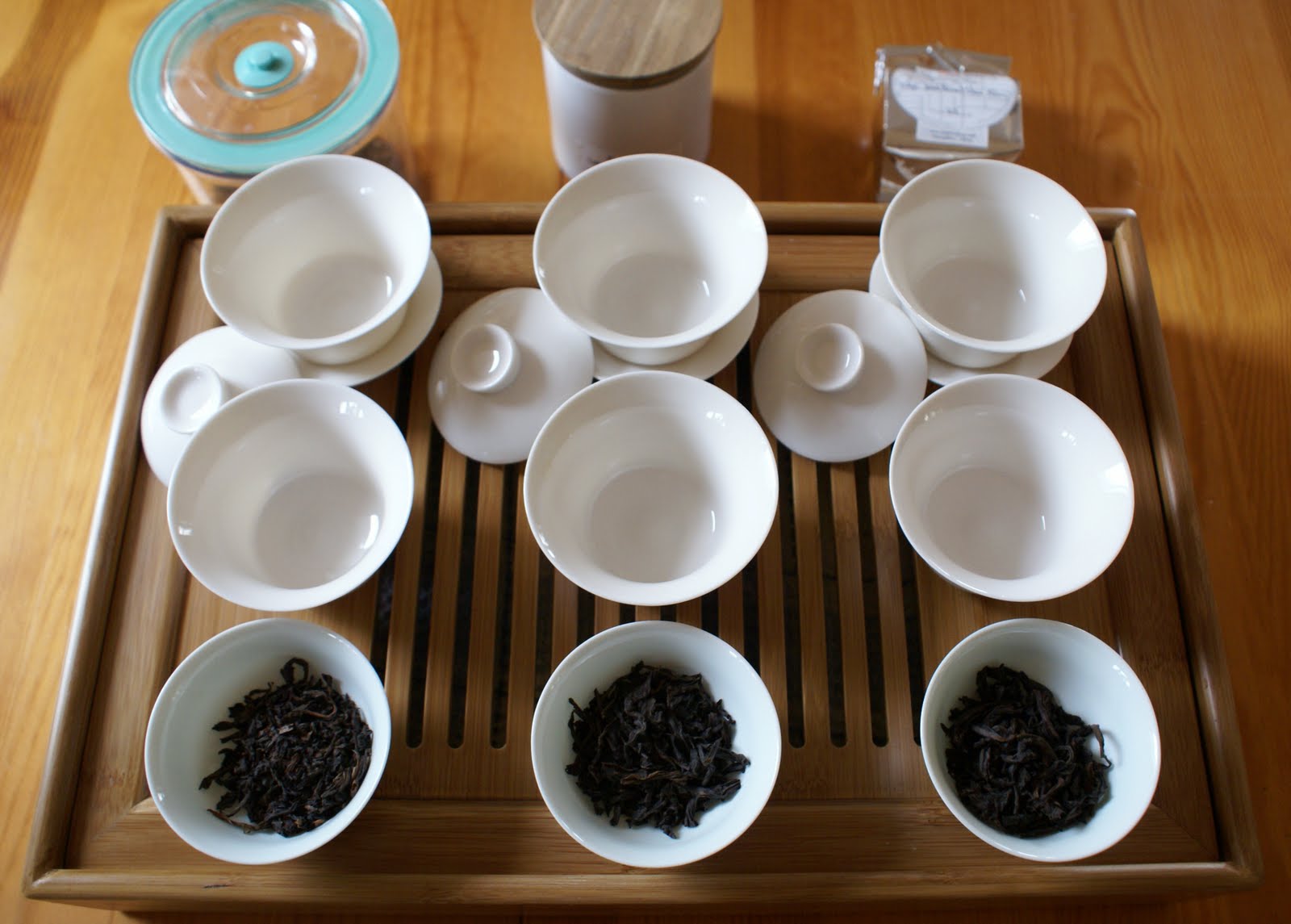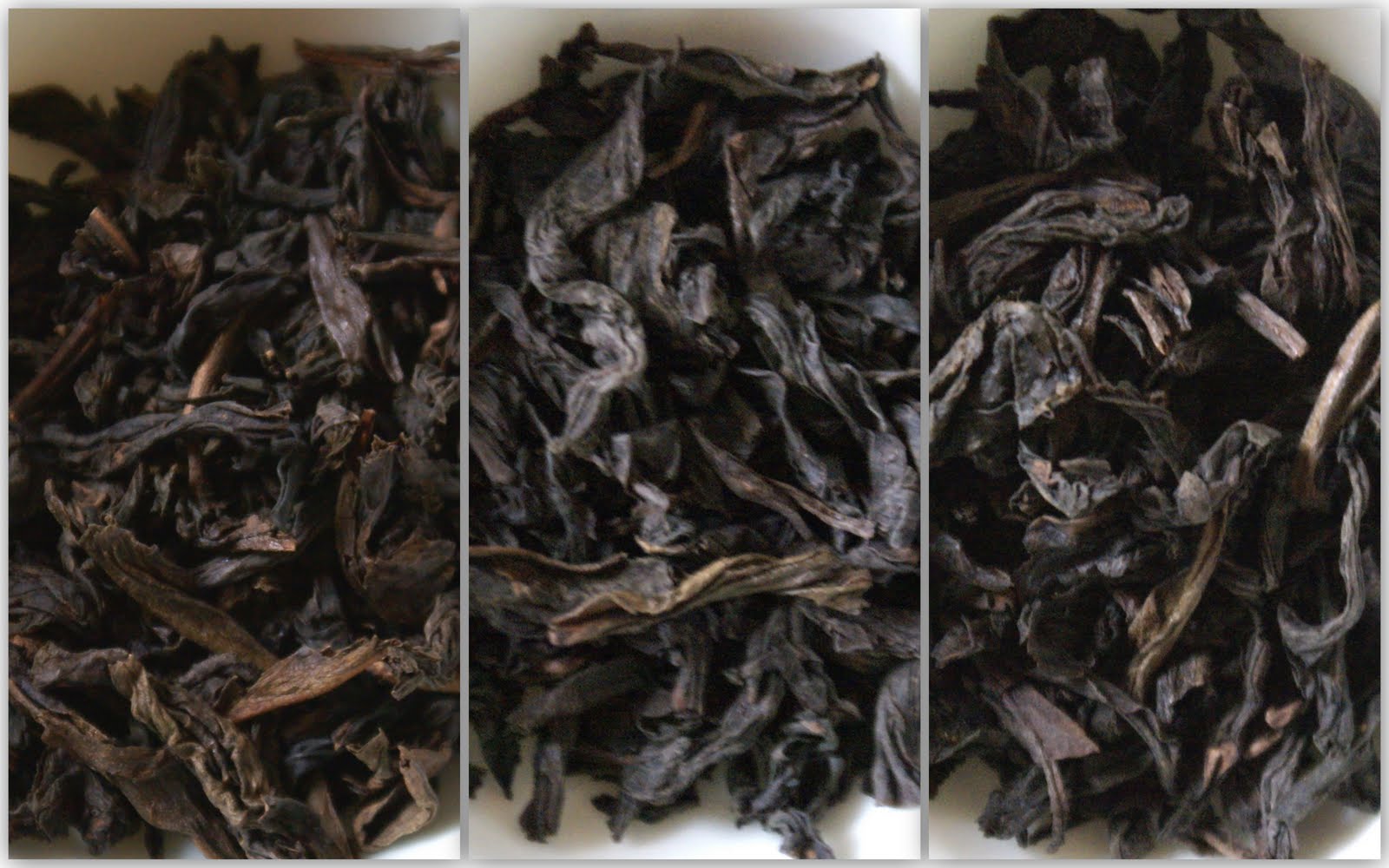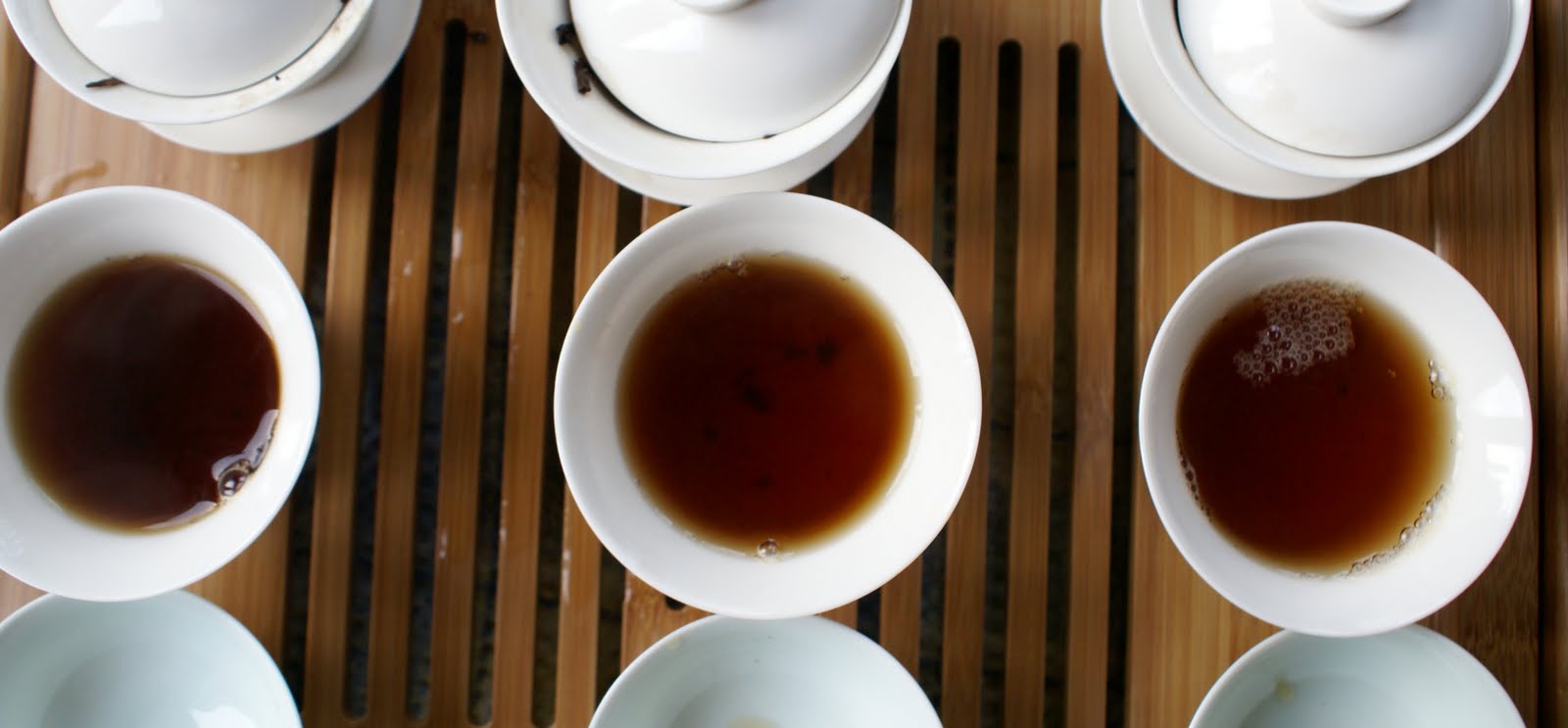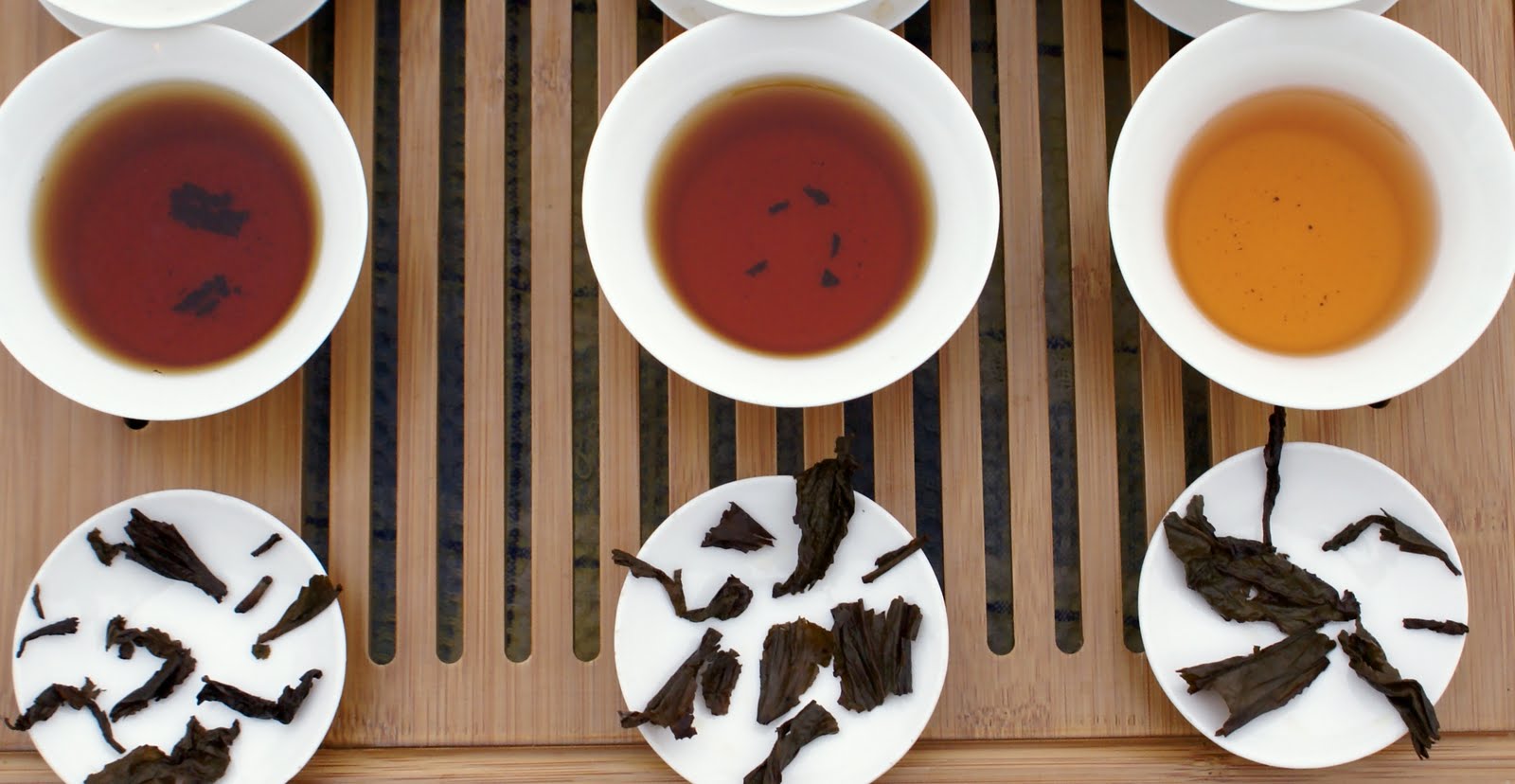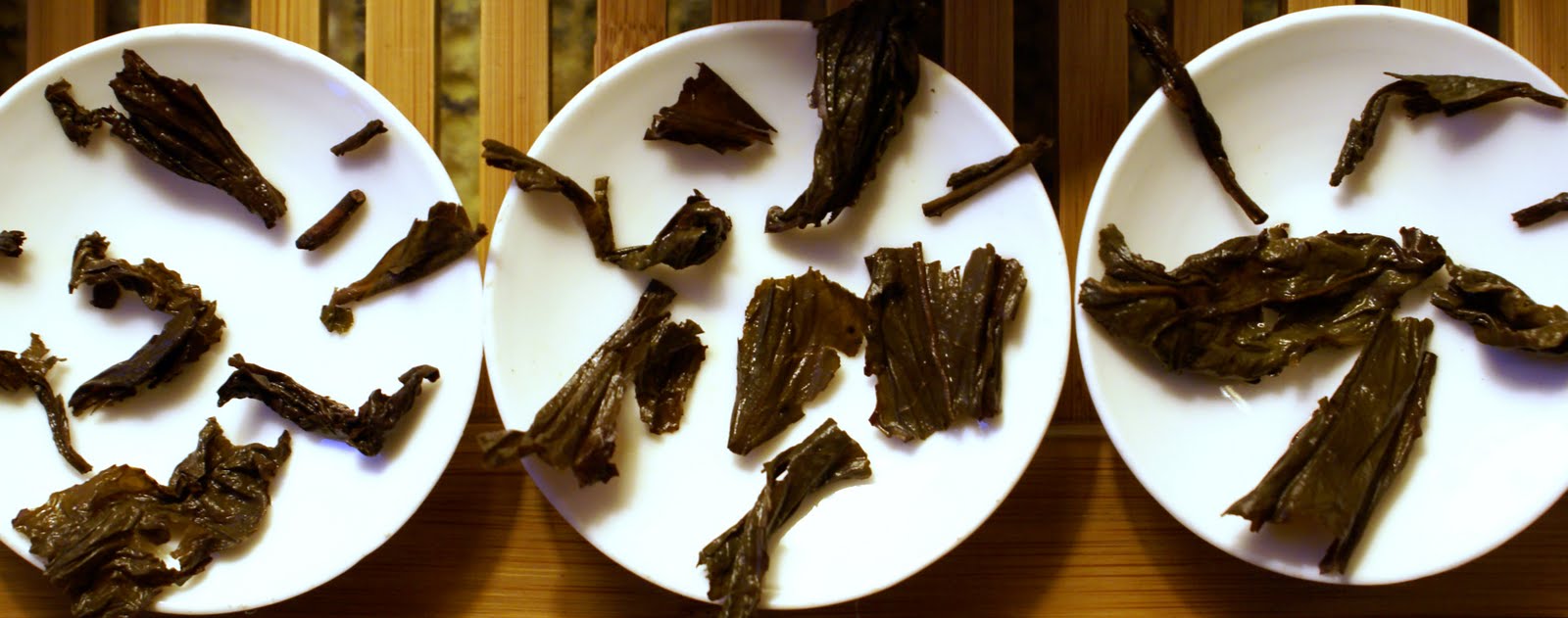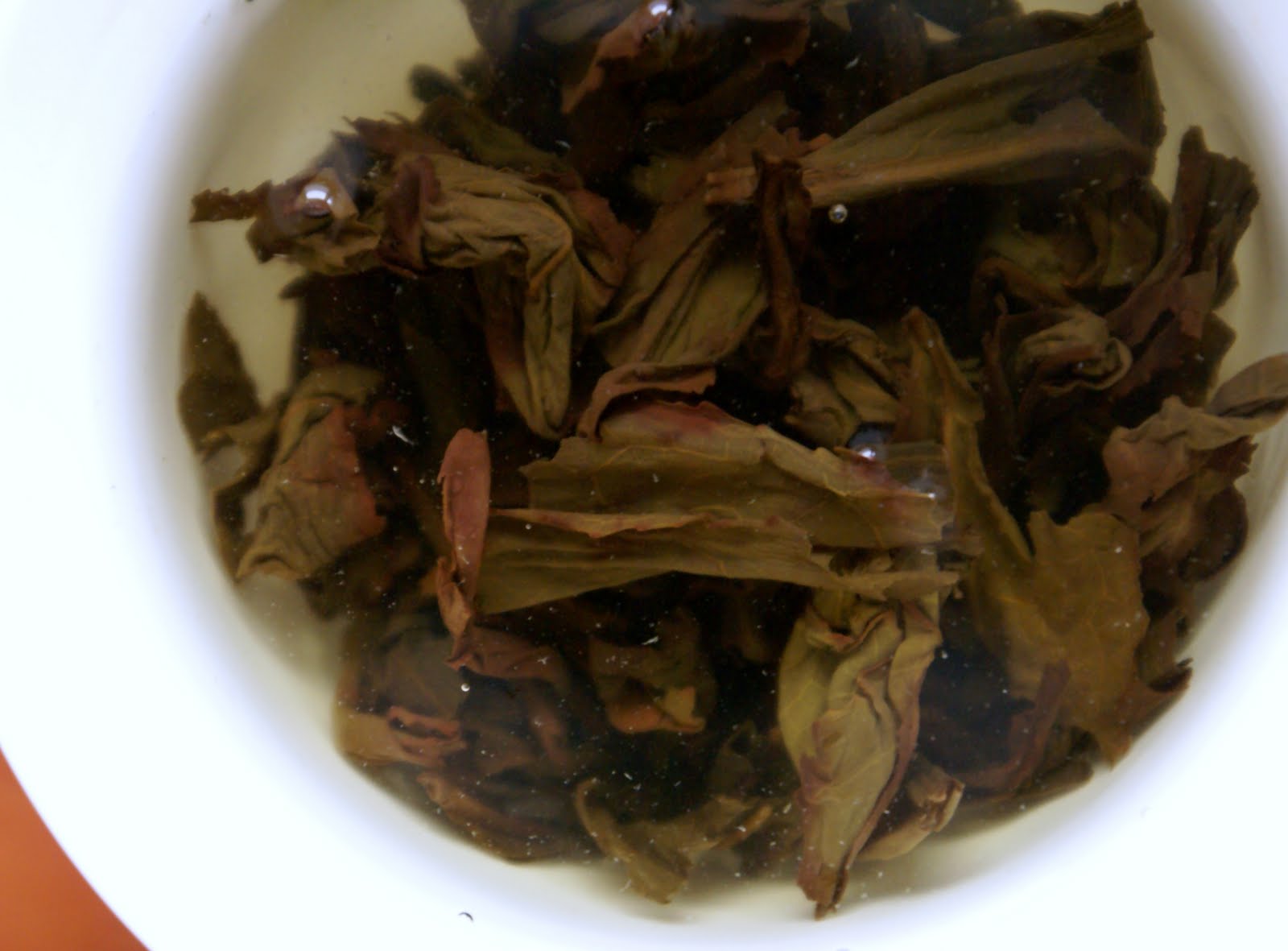Comparative tasting rocks. Tasting different things together is a perfect wake-me-up. You become more perceptive to the minute differences and analogies even of very similar things.
The setup.
I recently realised that among my 50+ tea reviews on this blog, one important tea family was still missing: Wuyi. ‘Cliff’ or ‘rock’ tea from eastern China’s Fujian. The Bordeaux of tea. Many, many tea drinkers’ favourite oolong. It’s not my favourite, but as every wine drinker with Bordeaux, I have several bins in the tea cellar, and enjoy them from time to time.
Shuixian (Western translation: Water Sprite) is the most popular and widely available oolong tea from Wuyi (and elsewhere in Fujian). It’s a generic name that refers both to a varietal of tea tree and to the style of tea that is obtained from it. As all Wuyi oolongs this is over 50%-oxidised and medium- to heavy-roasted. Of all Wuyi teas, Shuixian is considered to see the highest roast, though as will all things tea this varies from producer to producer.
Here I have a comparative look at three Shuixians. One was purchased in Poland from online merchant eHerbata and I infer it’s a 2008; it cost the equivalent of 6€ / 100g. (Hereafter referred to as sample ‘A’). Shuixian ‘B’ is the 2008 Premium Laocong (‘Old Tree’) from Dragon Tea House ($20 / 100g; now available in the 2009 vintage). ‘C’ is the 2008 Traditional Shuixian from Jing Tea ($26 / 100g).
Dry leaf appearance is similar in all three. We have the typical Wuyi long, twisted leaves that vary in colour from very deep green to almost black, but mostly are medium and medium dark brown. There’s little qualitative information to be drawn from the visual aspect alone, other than ‘A’ and ‘B’ contain a varying proportion of broken leaf while ‘C’ is the most intact (something you can’t really see on the photo above). Also, A is altogether lighter in colour with a degree of light brown leaves; hard to say why for the moment but it’s a hint I’ll elaborate on later.
As is common practice with Wuyi oolong, I brewed these teas in a gongfu succession of very short steeps on a large amount of leaf (4.5g for 75 ml of water; 15s, 15s, 25s, 30s, 40s, 50s, 1m etc.). The colour of the first brew is rather similar:
Tea ‘A’ came out rather unpleasant. It’s dominated by roast, and tastes both a little stale and overbrewed, with an untasty wet wood and soaked raisin profile. Bitterish and tannic in an unpleasant, unclean way on the finish. Later brewings are a little nicer, coming close ot a black tea in expression with a mulchy, sweaty character. This tea has much deteriorated since fall 2008 when I bought it (at the time it was a basic but essentially correct and pleasant tea). And it makes me think it’s not necessarily a 2008 but perhaps an older stock.
Tea ‘B’ gives a solid performance. It’s a chewy, rustic rendition of Shuixian with little in terms of finesse, and it’s slightly dominated by roast. The reason I compared Wuyi tea with Bordeaux is not casual, as I tend to think of roast in teas as similar to oak in wines. Oak is very easy to overdo. In youth, many red wines are dominated by oak; some shake this off with ageing, some don’t. This Shuixian probably won’t integrate its roast even if you age it for years. It’s also a tannic, mildly astringent tea. Good quality here: at least tastes like the real thing. I particularly like the middle infusions here (#2–5), where the roast recedes a bit, leaving an impressive, almost physical thickness to this oily brew. Later, chocolate comes back again.
Tea ‘C’ is quite different from the other two. It has a delightful clean bitter chocolate aroma to the warmed leaves, and shows lighter than ‘A’ or ‘B’, especially in later infusions whose colour is never darker than deep amber. Never an overpowering tea, this seems less roasted, with the leaf oxidation influencing the profile. It’s quite assertive throughout the middle infusions, semi-rich and rather buttery than milky (milk-chocolatey is often used as a mouthfeel descriptor for Shuixian). A very enjoyable tea with a transparent, high-quality profile and considerable finesse for a Wuyi tea.
Here’s a photo of the final 20-minute brewing:
As you can see tea ‘C’ is quite lighter in colour while ‘A’ and ‘B’ still brew very dark. Let’s have a closer look at the expired leaves now:
Here the observations from the dry leaf and the comparative tasting find their final confirmation. ‘A’ and ‘B’ are showing a high amount of broken leaf, leaf fragments, and in the case of ‘A’ also of stems. ‘C’ has the largest and most intact leaves that are also the lightest in colour; they open almost completely, showing that the roasting was at its lightest and most skillful here (long, careful roasting preserved the leaves better while quick commercial roast in electric machines at high temperatures tends to burn the leaves). Tea ‘A’ has leaves of different colour that remain twisted and rolled: the poorest roasting shows here. ‘B’ looks almost as good as ‘C’ but the leaves are consistently fragmented. It’s a slightly lower grade apparently than ‘C’, although the cup is quite pleasant.
It was an interesting tasting also in how to buy teas. Whether on the internet or in a physical shop we’re often confronted with elaborate prose on a given tea’s origins, and few technical details on how it was actually made. ‘Premium’, ‘Supreme’, ‘Traditional’ are meaningless terms that add to the confusion. Looking at the dry leaf and, if you have a chance, at the expired one (some online merchants post photos of these) can reasonably help you make an educated purchase. But best is, of course, trying the tea before you shell out the $25.
2008 Traditional Shuixian (Jing Tea), expired leaf after 10 infusions.





